Communication


What is a Social Science Essay?

[Ed. – We present this article, adapted from a chapter of Good Essay Writing: A Social Sciences Guide , as a resource for Academic Writing Month.]
There are different types of social science essay, and essays of different lengths require slightly different approaches (these will be addressed later). However, all social science essays share a basic structure which is common to many academic subject areas. At its simplest, a social science essay looks something like this:
Title | Every essay should begin with the title written out in full. In some cases this will simply be the set question or statement for discussion.
Introduction | The introduction tells the reader what the essay is about.
Main section | The main section, or ‘body’, of the essay develops the key points of the argument in a ‘logical progression’. It uses evidence from research studies (empirical evidence) and theoretical arguments to support these points.
Conclusion | The conclusion reassesses the arguments presented in the main section in order to make a final statement in answer to the question.
List of references | This lists full details of the publications referred to in the text.
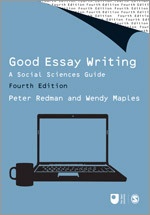
What is distinctive about a social science essay?
As you are no doubt aware, essay writing is a common feature of undergraduate study in many different subjects. What, then, is distinctive about essay writing in the social sciences? There are particular features that characterize social science essays and that relate to what is called the epistemological underpinning of work in this area (that is, to ideas about what constitutes valid social scientific knowledge and where this comes from). Among the most important of these characteristics are:
• the requirement that you support arguments with evidence, particularly evidence that is the product of systematic and rigorous research;
• the use of theory to build explanations about how the social world works.
Evidence is important in social scientific writing because it is used to support or query beliefs, propositions or hypotheses about the social world. Let’s take an example. A social scientist may ask: ‘Does prison work?’ This forms an initial question, but one that is too vague to explore as it stands. (This question might be about whether prison ‘works’ for offenders, in terms of providing rehabilitation, or re-education; or it might be about whether it ‘works’ for victims of crime who may wish to see retribution – or any number of other issues.) To answer the question in mind, the social scientist will need to formulate a more specific claim, one that can be systematically and rigorously explored. Such a claim could be formulated in the following terms:
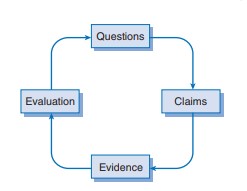
‘Imprisonment reduces the likelihood of subsequent reoffending’. This claim can now be subjected to systematic research. In other words, the social scientist will gather evidence for and against this claim, evidence that she or he will seek to interpret or evaluate. This process of evaluation will tend to support or refute the original claim, but it may be inconclusive, and/or it may generate further questions. Together, these processes of enquiry can be described as forming a ‘circuit of social scientific knowledge’. This circuit can be represented as in this figure.
Undergraduates may sometimes be asked to conduct their own small-scale research, for instance a small number of interviews, or some content analysis. However, the focus of social science study at undergraduate level, and particularly in the first two years of study, will be largely on the research of others. Generally, in preparing for writing your essays, the expectation will be that you will identify and evaluate evidence from existing research findings. However, the principle holds good: in writing social science essays you will need to find evidence for and against any claim, and you will need to evaluate that evidence.
Theory is important in social scientific writing because the theoretical orientation of the social scientist will tend to inform the types of question she or he asks, the specific claims tested, the ways in which evidence is identified and gathered, and the manner in which this evidence is interpreted and evaluated. In other words, the theoretical orientation of the social scientist is liable to impact upon the forms of knowledge she or he will produce.
Take, for example, the research question we asked above: ‘Does prison work?’ A pragmatic, policy-oriented social scientist may seek to answer this question by formulating a specific claim of the sort we identified, ‘Imprisonment reduces the likelihood of reoffending’. She or he may then gather evidence of reoffending rates among matched groups of convicted criminals, comparing those who were imprisoned with those who were given an alternative punishment such as forms of community service. Evidence that imprisonment did not produce significantly lower rates of reoffending than punishment in the community may then be interpreted as suggesting that prison does not work, or that it works only up to a point. However, another social scientist might look at the same research findings and come to a different conclusion, perhaps that the apparent failure of prison to reduce reoffending demonstrates that its primary purpose lies elsewhere. Indeed, more ‘critically’ oriented social scientists (for example, those informed by Marxism or the work of Michel Foucault) have sought to argue that the growth of prisons in the nineteenth century was part of wider social attempts to ‘discipline’, in particular, the working class.
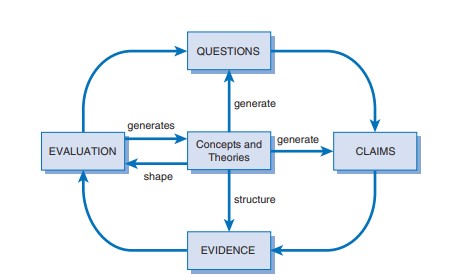
The issue here is not whether these more ‘critical’ arguments are right or wrong but that a social scientist’s theoretical orientation will inform how she or he evaluates the available evidence. In fact, it is likely that a ‘critical’ social scientist of this sort would even have formulated a different research ‘claim’. For example, rather than seeking to test the claim, ‘Imprisonment reduces the likelihood of reoffending’, the critical social scientist might have sought to test the proposition, ‘Prisons are part of wider social strategies that aim to produce “disciplined” subjects’. The point for you to take away from this discussion is, then, that the theories we use shape the forms of social scientific knowledge we produce (see Figure 2).
There is considerable debate within the social sciences about the exact relationship between theory and evidence. To simplify somewhat, some social scientists tend to argue that evidence can be used to support or invalidate the claims investigated by research and thereby produce theoretical accounts of the social world that are more or less accurate. Other social scientists will tend to argue that our theoretical orientations (and the value judgements and taken-for-granted assumptions that they contain) shape the processes of social scientific enquiry itself, such that we can never claim to produce a straightforwardly ‘accurate’ account of the social world. Instead, they suggest that social scientific knowledge is always produced from a particular standpoint and will inevitably reflect its assumptions.
What you need to grasp is that essay writing in the social sciences is distinguished by its emphasis on: the use of researched evidence to support arguments and on theory as central to the process by which we build accounts of social worlds. Your own writing will need to engage with both elements.
Common errors in essays
Having identified what distinguishes a social science essay we can return to the more practical task of how to write one. This process is elaborated in the chapters that follow, but before getting into the details of this, we should think about what commonly goes wrong in essay writing.
Perhaps the most common mistakes in essay writing, all of which can have an impact on your marks, are:
• failure to answer the question;
• failure to write using your own words;
• poor use of social scientific skills (such as handling theory and evidence);
• poor structure;
• poor grammar, punctuation and spelling; and
• failure to observe the word limit (where this is specified).
Failing to answer the question sounds easy enough to avoid, but you might be surprised how easy it is to write a good answer to the wrong question. Most obviously, there is always the risk of misreading the question. However, it is frequently the case that questions will ‘index’ a wider debate and will want you to review and engage with this. Thus, you need to avoid the danger of understanding the question but failing to connect it to the debate and the body of literature to which the question refers. Equally, particularly on more advanced undergraduate courses, you are likely to be asked to work from an increasing range of sources. The dangers here include failing to select the most relevant material and failing to organize the material you have selected in a way that best fits the question. Therefore, make sure that you take time to read the question properly to ensure that you understand what is being asked. Next, think carefully about whether there is a debate that ‘lies behind’ the question. Then be sure to identify the material that addresses the question most fully.
Writing in your own words is crucial because this is the best way in which you can come to understand a topic, and the only way of demonstrating this understanding to your tutor. The important point to remember is that if you do plagiarize, your essay risks receiving a fail grade, and if you plagiarize repeatedly you risk further sanctions. You must therefore always put arguments in your own words except when you are quoting someone directly (in which case you must use the appropriate referencing conventions). The positive side of what might seem like a draconian rule is that you will remember better what you have put in your own words. This ensures that you will have the fullest possible understanding of your course. If there is an end-of-course exam, such an understanding will be a real asset.
Social science essays also need to demonstrate an effective use of social scientific skills. Perhaps the most obvious of these skills is the ability to deploy theory and evidence in an appropriate manner (as you saw in the previous section, this is what distinguishes social scientific essay writing). However, particularly as you move on to more advanced undergraduate courses, you should also keep in mind the need to demonstrate such things as confidence in handling social scientific concepts and vocabulary; an awareness of major debates, approaches and figures in your field; the ability to evaluate competing arguments; and an awareness of potential uncertainty, ambiguity and the limits of knowledge in your subject. These are important because they indicate your ability to work creatively with the tools of the social scientist’s trade.
An effective structure is important and pragmatic because it helps the person who marks your essay to understand what is going on. By contrast, a list of unconnected ideas and examples is likely to confuse, and will certainly fail to impress. The simplest way to avoid this is to follow the kind of essay writing conventions briefly outlined above and discussed in later chapters of this guide. Chapter 8, on the main body of the essay, is particularly relevant here, but you will also need to keep in mind the importance of a well-written introduction and conclusion to an effectively structured argument.
The ability to spell, punctuate and use grammar correctly is, generally speaking, something you are expected to have mastered prior to embarking on a degree-level course. This is really a matter of effective communication. While it is the content of your essay that will win you the most marks, you need to be able spell, punctuate and use grammar effectively in order to communicate what you have to say. Major problems in this area will inevitably hold down your marks, so if this is an issue in your work, it will be a good idea to seek further help.
Finally, observing the word limit is important – and, as you probably realize, more difficult than it sounds. The simplest advice is always to check whether there is a word limit and what this is, and then to be ruthless with yourself, focusing only on the material that is most pertinent to the question. If you find that you have written more words than is allowed, you will need to check for irrelevant discussions, examples, or even wordy sentence construction. Too few words may indicate that you haven’t provided the depth of discussion required, or that you have omitted essential points or evidence.
In the light of the above, we can identify four golden rules for effective social scientific essay writing.
Rule 1: Answer the question that is asked.
Rule 2: Write your answer in your own words.
Rule 3: Think about the content of your essay, being sure to demonstrate good social scientific skills.
Rule 4: Think about the structure of your essay, being sure to demonstrate good writing skills, and observing any word limit.
Why an essay is not a report, newspaper article or an exam answer
This section has mainly focused on what is distinctive about a social science essay, but there is something distinctive about essays in general that is worth keeping in mind. Many students come from professional backgrounds where report writing is a common form of communication. For other students a main source of information is newspapers or online websites. These are all legitimate forms of writing that serve useful purposes – but, apart from some of the content on academic websites, they just aren’t essays. There are exam conventions that make exam writing – even ‘essay style’ exams – different from essay writing.
In part, this is to do with ‘academic register’ or ‘voice’. Part of what you will develop as you become a stronger essay writer is a ‘voice’ that is your own, but that conforms to the conventions of academic practice. For social scientists, as we have noted above, this practice includes the use of evidence to support an argument and providing references that show where your ideas and evidence have come from. It also includes the ability to write with some confidence, using the vernacular – or language – of your subject area. Different forms of writing serve different purposes. The main purpose of academic writing is to develop and share knowledge and understanding. In some academic journals this can take the form of boisterous debate, with different academics fully and carefully defending, or arguing for, one position or another. For students of social science, however, there may be less at stake, but essays should nevertheless demonstrate knowledge and understanding of a particular issue or area. Conforming to some basic conventions around how to present ideas and arguments, helps us more easily to compare those ideas, just as conforming to the rules of a game makes it easier for one sports team to play against another: if one team is playing cricket and the other baseball, we will find there are similarities (both use bats, have innings, make runs), but there will also be lots of awkward differences. In the end, neither the players nor the spectators are likely to find it a very edifying experience. The following looks at other forms of serious writing that you may be familiar with, but that just aren’t cricket.
Report writing
Reports take a variety of forms, but typically involve: an up-front ‘executive summary’, a series of discussions, usually with numbered headings and subheadings. They are also likely to include ‘bullet points’ that capture an idea or argument in a succinct way. Professional reports may include evidence, arguments, recommendations and references. You may already have spotted some of the similarities with essays – and the crucial differences. Let’s begin with the similarities. Reports and essays both involve discussion, the use of evidence to support (or refute) a claim or argument, and a list of references. Both will have an introductory section, a main body and a conclusion. However, the differences are important. With the exception of very long essays (dissertations and the like), essays do not generally have numbered headings and subheadings. Nor do they have bullet points. They also don’t have executive summaries. And, with some notable exceptions (such as essays around areas of social policy perhaps), social science essays don’t usually require you to produce policy recommendations. The differences are significant, and are as much about style as they are about substance.
Journalistic writing
For many students, journalistic styles of writing are most familiar. Catchy headlines (or ‘titles’) are appealing, and newspapers’ to-the-point presentation may make for easier reading. News stories, however, follow a different set of requirements to essays – a different set of ‘golden rules’. In general, newspaper and website news articles foreground the ‘who, what, where, when and why’ of a story in the first paragraph. The most important information is despatched immediately, with the assumption that all readers will read the headline, most readers will read the first paragraph, and dwindling numbers will read the remainder of the article. Everyday newspaper articles often finish with a ‘whimper’ for this reason, and there may be no attempt to summarize findings or provide a conclusion at the end – that’s not the role of news journalists. (Though there is quite a different set of rules for ‘Op Ed’ or opinion pieces.) Student essays, by contrast, should be structured to be read from beginning to end. The introduction should serve to ‘outline’ or ‘signpost’ the main body of the essay, rather than cover everything in one fell swoop; the main body should proceed with a clear, coherent and logical argument that builds throughout; and the essay should end with a conclusion that ties the essay together.
Exam writing
Again, exam writing has similarities and differences with essay writing. Perhaps the main differences are these: under exam conditions, it is understood that you are writing at speed and that you may not communicate as effectively as in a planned essay; you will generally not be expected to provide references (though you may be expected to link clearly authors and ideas). Longer exam answers will need to include a short introduction and a conclusion, while short answers may omit these. Indeed, very short answers may not resemble essays at all as they may focus on factual knowledge or very brief points of comparison.
Peter Redman and Wendy Maples
Peter Redman is a senior lecturer in sociology at The Open University. With Stephen Frosh and Wendy Hollway, he edit the Palgrave book series, Studies in the Psychosocial and is a former editor of the journal, Psychoanalysis, Culture & Society . Academic consultant Wendy Maples is a research assistant in anthropology at the University of Sussex. Together they co-authored Good Essay Writing: A Social Sciences Guide (Sage, 2017) now in its fifth edition.
Related Articles

Fourth Edition of ‘The Evidence’: Do Women Make Better Doctors?

Webinar – Trust in Science: Understanding the Trends and Implications for Science Communication

Young Explorers Award Honors Scholars at Nexus of Life and Social Science
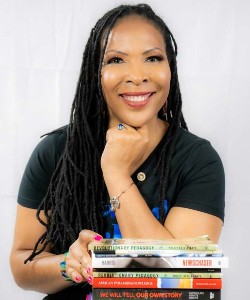
Celebrating 20 Years of an Afrocentric Small Scholarly Press

Striving for Linguistic Diversity in Scientific Research
Each country has its own unique role to play in promoting greater linguistic diversity in scientific communication.

Third Edition of ‘The Evidence’: How Can We Overcome Sexism in AI?
This month’s installment of The Evidence explores how leading ethics experts are responding to the urgent dilemma of gender bias in AI. […]

Second Edition of ‘The Evidence’ Examines Women and Climate Change
The second issue of The Evidence explores the intersection of gender inequality and the global climate crisis. Author Josephine Lethbridge recounts the […]
This site uses Akismet to reduce spam. Learn how your comment data is processed .
Spring 2024 Social, Behavioral and Economic Sciences Advisory Committee Meeting
Webinar: how to write and structure an article’s front matter, webinar: how to get more involved with a journal and develop your career, science of team science 2024 virtual conference, webinar: how to collaborate across paradigms – embedding culture in mixed methods designs, american psychological association annual convention, societal impact of social sciences, humanities, and arts 2024, cspc 2024: 16th canadian science policy conference.

Customize your experience
Select your preferred categories.
- Announcements
- Business and Management INK
Higher Education Reform
Open access, recent appointments, research ethics, interdisciplinarity, international debate.
- Academic Funding
Public Engagement
- Recognition
Presentations
Science & social science, social science bites, the data bulletin.

New Fellowship for Community-Led Development Research of Latin America and the Caribbean Now Open
Thanks to a collaboration between the Inter-American Foundation (IAF) and the Social Science Research Council (SSRC), applications are now being accepted for […]

Social, Behavioral Scientists Eligible to Apply for NSF S-STEM Grants
Solicitations are now being sought for the National Science Foundation’s Scholarships in Science, Technology, Engineering, and Mathematics program, and in an unheralded […]

With COVID and Climate Change Showing Social Science’s Value, Why Cut it Now?
What are the three biggest challenges Australia faces in the next five to ten years? What role will the social sciences play in resolving these challenges? The Academy of the Social Sciences in Australia asked these questions in a discussion paper earlier this year. The backdrop to this review is cuts to social science disciplines around the country, with teaching taking priority over research.

Opportunity to Participate in RFI on Proposed National Secure Data Service
According to the United Nations Educational, Scientific, and Cultural Organization, scientific collaboration and diplomacy are key when trying to effectively address the […]

Public Interest Attorney Bryan Stevenson to Receive 2024 Moynihan Prize
Public interest attorney Bryan Stevenson, the founder and executive director of the Alabama-based Equal Justice Initiative, will receive the 2024 Daniel Patrick Moynihan Prize from the American Academy of Political and Social Science.

Aiming to spur greater connections between the life and social sciences, Science magazine and NOMIS look to recognize young researchers through the NOMIS and Science Young Explorers Award.

New Podcast Series Applies Social Science to Social Justice Issues
Sage (the parent of Social Science Space) and the Surviving Society podcast have launched a collaborative podcast series, Social Science for Social […]

Big Think Podcast Series Launched by Canadian Federation of Humanities and Social Sciences
The Canadian Federation of Humanities and Social Sciences has launched the Big Thinking Podcast, a show series that features leading researchers in the humanities and social sciences in conversation about the most important and interesting issues of our time.

The We Society Explores Intersectionality and Single Motherhood
In a recently released episode of The We Society podcast, Ann Phoenix, a psychologist at University College London’s Institute of Education, spoke […]

In this issue of The Evidence newsletter, journalist Josephine Lethbridge examines why women doctors see better outcomes in their patients’ health.

A Social Scientist Looks at the Irish Border and Its Future
‘What Do We Know and What Should We Do About the Irish Border?’ is a new book from Katy Hayward that applies social science to the existing issues and what they portend.

Brexit and the Decline of Academic Internationalism in the UK
Brexit seems likely to extend the hostility of the UK immigration system to scholars from European Union countries — unless a significant change of migration politics and prevalent public attitudes towards immigration politics took place in the UK. There are no indications that the latter will happen anytime soon.

Brexit and the Crisis of Academic Cosmopolitanism
A new report from the Royal Society about the effects on Brexit on science in the United Kingdom has our peripatetic Daniel Nehring mulling the changes that will occur in higher education and academic productivity.

How AI-Integration is Changing the Workplace
The authors describe how their study investigated how middle managers perceive the impacts of AI-system integration on their work characteristics in the financial services industry.

Keeping Qualitative Research Weird!
The authors urge qualitative researchers to retain what makes qualitative research different and powerful and yes… weird: the researcher’s voice, multitudes of potential data sources, and meaningful contextualization.

Sometimes, We Do Need a Narcissist
Karynne Turner, Feray Adigüzel, and Jatinder S Sidhu reflect on their research article, “Chief executive officer narcissism, corporate inertia, and securities analysts’ stock […]

2024 Holberg Prize Goes to Political Theorist Achille Mbembe
Political theorist and public intellectual Achille Mbembe, among the most read and cited scholars from the African continent, has been awarded the 2024 Holberg Prize.

Edward Webster, 1942-2024: South Africa’s Pioneering Industrial Sociologist
Eddie Webster, sociologist and emeritus professor at the Southern Centre for Inequality Studies at the University of the Witwatersrand in South Africa, died on March 5, 2024, at age 82.

Charles V. Hamilton, 1929-2023: The Philosopher Behind ‘Black Power’
Political scientist Charles V. Hamilton, the tokenizer of the term ‘institutional racism,’ an apostle of the Black Power movement, and at times deemed both too radical and too deferential in how to fight for racial equity, died on November 18, 2023. He was 94.

National Academies Seeks Experts to Assess 2020 U.S. Census
The National Academies’ Committee on National Statistics seeks nominations for members of an ad hoc consensus study panel — sponsored by the U.S. Census Bureau — to review and evaluate the quality of the 2020 Census.

Will the 2020 Census Be the Last of Its Kind?
Could the 2020 iteration of the United States Census, the constitutionally mandated count of everyone present in the nation, be the last of its kind?

Will We See A More Private, But Less Useful, Census?
Census data can be pretty sensitive – it’s not just how many people live in a neighborhood, a town, a state or […]
Recent survey data show declines in trust in science that mirror earlier trends for other institutions, including journalism and government. New research […]

To mark the Black- and female-owned Universal Write Publications’ 20th anniversary, Sage’s Geane De Lima asked UWP fonder Ayo Sekai some questions about UWP’s past, present and future.

Free Online Course Reveals The Art of ChatGPT Interactions
You’ve likely heard the hype around artificial intelligence, or AI, but do you find ChatGPT genuinely useful in your professional life? A free course offered by Sage Campus could change all th

The Importance of Using Proper Research Citations to Encourage Trustworthy News Reporting
Based on a study of how research is cited in national and local media sources, Andy Tattersall shows how research is often poorly represented in the media and suggests better community standards around linking to original research could improve trust in mainstream media.

Research Integrity Should Not Mean Its Weaponization
Commenting on the trend for the politically motivated forensic scrutiny of the research records of academics, Till Bruckner argues that singling out individuals in this way has a chilling effect on academic freedom and distracts from efforts to address more important systemic issues in research integrity.

What Do We Know about Plagiarism These Days?
In the following Q&A, Roger J. Kreuz, a psychology professor who is working on a manuscript about the history and psychology of plagiarism, explains the nature and prevalence of plagiarism and the challenges associated with detecting it in the age of AI.

The advisory committee for the U.S. National Science Foundation’s Social, Behavioral and Economic Sciences Directorate meets twice yearly to provide advice, recommendations […]

Webinar – Navigating the Era of Artificial Intelligence: Achieving Human-AI Harmony
This two-part webinar series, funded through the Hauser Policy Impact Fund, will explore the Division of Behavioral and Social Sciences and Education’s […]

Talk: The Evidence-to-Policy Pipeline
Recent years have seen a large increase in the availability of rigorous impact evaluations that could inform policy decisions. However, it is […]

Exploring ‘Lost Person Behavior’ and the Science of Search and Rescue
What is the best strategy for finding someone missing in the wilderness? It’s complicated, but the method known as ‘Lost Person Behavior’ seems to offers some hope.

New Opportunity to Support Government Evaluation of Public Participation and Community Engagement Now Open
The President’s Management Agenda Learning Agenda: Public Participation & Community Engagement Evidence Challenge is dedicated to forming a strategic, evidence-based plan that federal agencies and external researchers can use to solve big problems.

Universities Should Reimagine Governance Along Co-Operative Lines
Instead of adhering to a corporate model based on individual achievement, the authors argue that universities need to shift towards co-operative governance that fosters collaborative approaches to teaching and research

The Power of Fuzzy Expectations: Enhancing Equity in Australian Higher Education
Having experienced firsthand the transformational power of education, the authors wanted to shed light on the contemporary challenges faced by regional and remote university students.

Why Social Science? Because It Can Help Contribute to AI That Benefits Society
Social sciences can also inform the design and creation of ethical frameworks and guidelines for AI development and for deployment into systems. Social scientists can contribute expertise: on data quality, equity, and reliability; on how bias manifests in AI algorithms and decision-making processes; on how AI technologies impact marginalized communities and exacerbate existing inequities; and on topics such as fairness, transparency, privacy, and accountability.

Digital Scholarly Records are Facing New Risks
Drawing on a study of Crossref DOI data, Martin Eve finds evidence to suggest that the current standard of digital preservation could fall worryingly short of ensuring persistent accurate record of scholarly works.

Survey Suggests University Researchers Feel Powerless to Take Climate Change Action
To feel able to contribute to climate action, researchers say they need to know what actions to take, how their institutions will support them and space in their workloads to do it.

Biden Administration Releases ‘Blueprint’ For Using Social and Behavioral Science in Policy
U.S. President Joseph Biden’s administration has laid down a marker buttressing the use of social and behavioral science in crafting policies for the federal government by releasing a 102-page Blueprint for the Use of Social and Behavioral Science to Advance Evidence-Based Policymaking.
Infrastructure

To Better Forecast AI, We Need to Learn Where Its Money Is Pointing
By carefully interrogating the system of economic incentives underlying innovations and how technologies are monetized in practice, we can generate a better understanding of the risks, both economic and technological, nurtured by a market’s structure.

Why Social Science? Because It Makes an Outsized Impact on Policy
Euan Adie, founder of Altmetric and Overton and currently Overton’s managing director, answers questions about the outsized impact that SBS makes on policy and his work creating tools to connect the scholarly and policy worlds.

Maybe You Can’t Buy Happinesss, But You Can Teach About It
When you deliver a university course that makes students happier, everybody wants to know what the secret is. What are your tips? […]

There’s Something in the Air, Part 2 – But It’s Not a Miasma
Robert Dingwall looks at the once dominant role that miasmatic theory had in public health interventions and public policy.

The Fog of War
David Canter considers the psychological and organizational challenges to making military decisions in a war.

Civilisation – and Some Discontents
The TV series Civilisation shows us many beautiful images and links them with a compelling narrative. But it is a narrative of its time and place.

Philip Rubin: FABBS’ Accidental Essential Man Linking Research and Policy
As he stands down from a two-year stint as the president of the Federation of Associations in Behavioral & Brain Sciences, or FABBS, Social Science Space took the opportunity to download a fraction of the experiences of cognitive psychologist Philip Rubin, especially his experiences connecting science and policy.

The Long Arm of Criminality
David Canter considers the daily reminders of details of our actions that have been caused by criminality.

Why Don’t Algorithms Agree With Each Other?
David Canter reviews his experience of filling in automated forms online for the same thing but getting very different answers, revealing the value systems built into these supposedly neutral processes.

A Black History Addendum to the American Music Industry
The new editor of the case study series on the music industry discusses the history of Black Americans in the recording industry.

A Behavioral Scientist’s Take on the Dangers of Self-Censorship in Science
The word censorship might bring to mind authoritarian regimes, book-banning, and restrictions on a free press, but Cory Clark, a behavioral scientist at […]

Jonathan Breckon On Knowledge Brokerage and Influencing Policy
Overton spoke with Jonathan Breckon to learn about knowledge brokerage, influencing policy and the potential for technology and data to streamline the research-policy interface.

Research for Social Good Means Addressing Scientific Misconduct
Social Science Space’s sister site, Methods Space, explored the broad topic of Social Good this past October, with guest Interviewee Dr. Benson Hong. Here Janet Salmons and him talk about the Academy of Management Perspectives journal article.

NSF Looks Headed for a Half-Billion Dollar Haircut
Funding for the U.S. National Science Foundation would fall by a half billion dollars in this fiscal year if a proposed budget the House of Representatives’ Appropriations Committee takes effect – the first cut to the agency’s budget in several years.

NSF Responsible Tech Initiative Looking at AI, Biotech and Climate
The U.S. National Science Foundation’s new Responsible Design, Development, and Deployment of Technologies (ReDDDoT) program supports research, implementation, and educational projects for multidisciplinary, multi-sector teams

Digital Transformation Needs Organizational Talent and Leadership Skills to Be Successful
Who drives digital change – the people of the technology? Katharina Gilli explains how her co-authors worked to address that question.

Six Principles for Scientists Seeking Hiring, Promotion, and Tenure
The negative consequences of relying too heavily on metrics to assess research quality are well known, potentially fostering practices harmful to scientific research such as p-hacking, salami science, or selective reporting. To address this systemic problem, Florian Naudet, and collegues present six principles for assessing scientists for hiring, promotion, and tenure.

Book Review: The Oxford Handbook of Creative Industries
Candace Jones, Mark Lorenzen, Jonathan Sapsed , eds.: The Oxford Handbook of Creative Industries. Oxford: Oxford University Press, 2015. 576 pp. $170.00, […]

Daniel Kahneman, 1934-2024: The Grandfather of Behavioral Economics
Nobel laureate Daniel Kahneman, whose psychological insights in both the academic and the public spheres revolutionized how we approach economics, has died […]

Canadian Librarians Suggest Secondary Publishing Rights to Improve Public Access to Research
The Canadian Federation of Library Associations recently proposed providing secondary publishing rights to academic authors in Canada.

Webinar: How Can Public Access Advance Equity and Learning?
The U.S. National Science Foundation and the American Association for the Advancement of Science have teamed up present a 90-minute online session examining how to balance public access to federally funded research results with an equitable publishing environment.

Open Access in the Humanities and Social Sciences in Canada: A Conversation
Five organizations representing knowledge networks, research libraries, and publishing platforms joined the Federation of Humanities and Social Sciences to review the present and the future of open access — in policy and in practice – in Canada

A Former Student Reflects on How Daniel Kahneman Changed Our Understanding of Human Nature
Daniel Read argues that one way the late Daniel Kahneman stood apart from other researchers is that his work was driven by a desire not merely to contribute to a research field, but to create new fields.

Four Reasons to Stop Using the Word ‘Populism’
Beyond poor academic practice, the careless use of the word ‘populism’ has also had a deleterious impact on wider public discourse, the authors argue.

The Added Value of Latinx and Black Teachers
As the U.S. Congress debates the reauthorization of the Higher Education Act, a new paper in Policy Insights from the Behavioral and Brain Sciences urges lawmakers to focus on provisions aimed at increasing the numbers of black and Latinx teachers.
A Collection: Behavioral Science Insights on Addressing COVID’s Collateral Effects
To help in decisions surrounding the effects and aftermath of the COVID-19 pandemic, the the journal ‘Policy Insights from the Behavioral and Brain Sciences’ offers this collection of articles as a free resource.
Susan Fiske Connects Policy and Research in Print
Psychologist Susan Fiske was the founding editor of the journal Policy Insights from the Behavioral and Brain Sciences. In trying to reach a lay audience with research findings that matter, she counsels stepping a bit outside your academic comfort zone.

Mixed Methods As A Tool To Research Self-Reported Outcomes From Diverse Treatments Among People With Multiple Sclerosis

What does heritage mean to you?

Personal Information Management Strategies in Higher Education

Working Alongside Artificial Intelligence Key Focus at Critical Thinking Bootcamp 2022
SAGE Publishing — the parent of Social Science Space – will hold its Third Annual Critical Thinking Bootcamp on August 9. Leaning more and register here

Watch the Forum: A Turning Point for International Climate Policy
On May 13, the American Academy of Political and Social Science hosted an online seminar, co-sponsored by SAGE Publishing, that featured presentations […]

Event: Living, Working, Dying: Demographic Insights into COVID-19
On Friday, April 23rd, join the Population Association of America and the Association of Population Centers for a virtual congressional briefing. The […]

Connecting Legislators and Researchers, Leads to Policies Based on Scientific Evidence
The author’s team is developing ways to connect policymakers with university-based researchers – and studying what happens when these academics become the trusted sources, rather than those with special interests who stand to gain financially from various initiatives.
Public Policy

Tavneet Suri on Universal Basic Income
Economist Tavneet Suri discusses fieldwork she’s done in handing our cash directly to Kenyans in poor and rural parts of Kenya, and what the generally good news from that work may herald more broadly.


Economist Kaye Husbands Fealing to Lead NSF’s Social Science Directorate
Kaye Husbands Fealing, an economist who has done pioneering work in the “science of broadening participation,” has been named the new leader of the U.S. National Science Foundation’s Directorate for Social, Behavioral and Economic Sciences.

Jane M. Simoni Named New Head of OBSSR
Clinical psychologist Jane M. Simoni has been named to head the U.S. National Institutes of Health’s Office of Behavioral and Social Sciences Research

Canada’s Federation For Humanities and Social Sciences Welcomes New Board Members
Annie Pilote, dean of the faculty of graduate and postdoctoral studies at the Université Laval, was named chair of the Federation for the Humanities and Social Sciences at its 2023 virtual annual meeting last month. Members also elected Debra Thompson as a new director on the board.

AAPSS Names Eight as 2024 Fellows
The American Academy of Political and Social Science today named seven scholars and one journalist as its 2024 fellows class.

National Academies Looks at How to Reduce Racial Inequality In Criminal Justice System
To address racial and ethnic inequalities in the U.S. criminal justice system, the National Academies of Sciences, Engineering and Medicine just released “Reducing Racial Inequality in Crime and Justice: Science, Practice and Policy.”

Survey Examines Global Status Of Political Science Profession
The ECPR-IPSA World of Political Science Survey 2023 assesses political science scholar’s viewpoints on the global status of the discipline and the challenges it faces, specifically targeting the phenomena of cancel culture, self-censorship and threats to academic freedom of expression.

Report: Latest Academic Freedom Index Sees Global Declines
The latest update of the global Academic Freedom Index finds improvements in only five countries

Analyzing the Impact: Social Media and Mental Health
The social and behavioral sciences supply evidence-based research that enables us to make sense of the shifting online landscape pertaining to mental health. We’ll explore three freely accessible articles (listed below) that give us a fuller picture on how TikTok, Instagram, Snapchat, and online forums affect mental health.

The Risks Of Using Research-Based Evidence In Policymaking
With research-based evidence increasingly being seen in policy, we should acknowledge that there are risks that the research or ‘evidence’ used isn’t suitable or can be accidentally misused for a variety of reasons.

Surveys Provide Insight Into Three Factors That Encourage Open Data and Science
Over a 10-year period Carol Tenopir of DataONE and her team conducted a global survey of scientists, managers and government workers involved in broad environmental science activities about their willingness to share data and their opinion of the resources available to do so (Tenopir et al., 2011, 2015, 2018, 2020). Comparing the responses over that time shows a general increase in the willingness to share data (and thus engage in Open Science).

Maintaining Anonymity In Double-Blind Peer Review During The Age of Artificial Intelligence
The double-blind review process, adopted by many publishers and funding agencies, plays a vital role in maintaining fairness and unbiasedness by concealing the identities of authors and reviewers. However, in the era of artificial intelligence (AI) and big data, a pressing question arises: can an author’s identity be deduced even from an anonymized paper (in cases where the authors do not advertise their submitted article on social media)?

Hype Terms In Research: Words Exaggerating Results Undermine Findings
The claim that academics hype their research is not news. The use of subjective or emotive words that glamorize, publicize, embellish or exaggerate results and promote the merits of studies has been noted for some time and has drawn criticism from researchers themselves. Some argue hyping practices have reached a level where objectivity has been replaced by sensationalism and manufactured excitement. By exaggerating the importance of findings, writers are seen to undermine the impartiality of science, fuel skepticism and alienate readers.

Five Steps to Protect – and to Hear – Research Participants
Jasper Knight identifies five key issues that underlie working with human subjects in research and which transcend institutional or disciplinary differences.

New Tool Promotes Responsible Hiring, Promotion, and Tenure in Research Institutions
Modern-day approaches to understanding the quality of research and the careers of researchers are often outdated and filled with inequalities. These approaches […]

There’s Something In the Air…But Is It a Virus? Part 1
The historic Hippocrates has become an iconic figure in the creation myths of medicine. What can the body of thought attributed to him tell us about modern responses to COVID?

Alex Edmans on Confirmation Bias
In this Social Science Bites podcast, Edmans, a professor of finance at London Business School and author of the just-released “May Contain Lies: How Stories, Statistics, and Studies Exploit Our Biases – And What We Can Do About It,” reviews the persistence of confirmation bias even among professors of finance.

Alison Gopnik on Care
Caring makes us human. This is one of the strongest ideas one could infer from the work that developmental psychologist Alison Gopnik is discovering in her work on child development, cognitive economics and caregiving.

Tejendra Pherali on Education and Conflict
Tejendra Pherali, a professor of education, conflict and peace at University College London, researches the intersection of education and conflict around the world.

Gamification as an Effective Instructional Strategy
Gamification—the use of video game elements such as achievements, badges, ranking boards, avatars, adventures, and customized goals in non-game contexts—is certainly not a new thing.

Harnessing the Tide, Not Stemming It: AI, HE and Academic Publishing
Who will use AI-assisted writing tools — and what will they use them for? The short answer, says Katie Metzler, is everyone and for almost every task that involves typing.

Immigration Court’s Active Backlog Surpasses One Million
In the first post from a series of bulletins on public data that social and behavioral scientists might be interested in, Gary Price links to an analysis from the Transactional Records Access Clearinghouse.

Webinar Discusses Promoting Your Article
The next in SAGE Publishing’s How to Get Published webinar series focuses on promoting your writing after publication. The free webinar is set for November 16 at 4 p.m. BT/11 a.m. ET/8 a.m. PT.

Webinar Examines Open Access and Author Rights
The next in SAGE Publishing’s How to Get Published webinar series honors International Open Access Week (October 24-30). The free webinar is […]

Ping, Read, Reply, Repeat: Research-Based Tips About Breaking Bad Email Habits
At a time when there are so many concerns being raised about always-on work cultures and our right to disconnect, email is the bane of many of our working lives.

New Dataset Collects Instances of ‘Contentious Politics’ Around the World
The European Research Center is funding the Global Contentious Politics Dataset, or GLOCON, a state-of-the-art automated database curating information on political events — including confrontations, political turbulence, strikes, rallies, and protests

Matchmaking Research to Policy: Introducing Britain’s Areas of Research Interest Database
Kathryn Oliver discusses the recent launch of the United Kingdom’s Areas of Research Interest Database. A new tool that promises to provide a mechanism to link researchers, funders and policymakers more effectively collaboratively and transparently.

Watch The Lecture: The ‘E’ In Science Stands For Equity
According to the National Science Foundation, the percentage of American adults with a great deal of trust in the scientific community dropped […]

Watch a Social Scientist Reflect on the Russian Invasion of Ukraine
“It’s very hard,” explains Sir Lawrence Freedman, “to motivate people when they’re going backwards.”

Dispatches from Social and Behavioral Scientists on COVID
Has the ongoing COVID-19 pandemic impacted how social and behavioral scientists view and conduct research? If so, how exactly? And what are […]

Contemporary Politics Focus of March Webinar Series
This March, the Sage Politics team launches its first Politics Webinar Week. These webinars are free to access and will be delivered by contemporary politics experts —drawn from Sage’s team of authors and editors— who range from practitioners to instructors.

New Thought Leadership Webinar Series Opens with Regional Looks at Research Impact
Research impact will be the focus of a new webinar series from Epigeum, which provides online courses for universities and colleges. The […]
- Impact metrics
- Early Career
- In Memorium
- Curated-Collection Page Links
- Science communication
- True Crime: Insight Into The Human Fascination With The Who-Done-It
- Melissa Kearney on Marriage and Children
- Raffaella Sadun on Effective Management
- Norman Denzin, 1941-2023: The Father of Qualitative Research
Subscribe to our mailing list
Get the latest news from the social and behavioral science community delivered straight to your inbox.
Thanks! Please check your inbox or spam folder to confirm your subscription.

- Request new password
- Create a new account
Good Essay Writing: A Social Sciences Guide
Student resources, on this website, you will find a range of resources corresponding to the topics covered in each chapter. just click on links to the left..
Writing good essays is one of the most challenging aspects of studying in the social sciences. This simple guide provides you with proven approaches and techniques to help turn you into a well-oiled, essay-writing machine.
Good Essay Writing demonstrates how to think critically and formulate your argument as well as offering water-tight structuring tips, referencing advice and a word on those all-too-familiar common worries – all brought to life through real student examples from a range of subjects.
This practical guide is an absolute must for everybody wanting – or needing – to brush up on their essay-writing skills and boost their grades.
Disclaimer:
This website may contain links to both internal and external websites. All links included were active at the time the website was launched. SAGE does not operate these external websites and does not necessarily endorse the views expressed within them. SAGE cannot take responsibility for the changing content or nature of linked sites, as these sites are outside of our control and subject to change without our knowledge. If you do find an inactive link to an external website, please try to locate that website by using a search engine. SAGE will endeavour to update inactive or broken links when possible.
The Critical Turkey
Essay Writing Hacks for the Social Sciences

How can I write an effective Conclusion? – A formula that almost always works
In most parts, the conclusion is a mirror image of the introduction. Before you read this blogpost, you should therefore have read its sibling, Introduction – a formula that almost always works.
Length and Purpose of the Conclusion
Like the introduction, your conclusion should be up to about 10% of the overall length of the essay, and no longer than this ballpark figure. For markers, it’s a fairly common occurrence to see overly long conclusions in student essays, and often it is quite obvious that the author was struggling to get up to the word count of the essay, and was then using (abusing?) the conclusion to add as many words as they thought reasonable. Overly short conclusions are less common, but also happen. The typical mistake here is that there isn’t much, or any, summary of the different points of the essay.
The purpose of a conclusion is to make sure your imaginary reader leaves the essay with a sense of clarity, and in a way, a sense of purpose, an understanding of what this all means in the bigger scheme of things. For the first point, you reiterate the main points you made in the essay. This makes sure your reader is on the same page with you and understands the importance of the different points you are summarising, and their relevance to the way you’ve discussed the topic. Then, secondly, you round off by basically explaining what this all means. This last point is usually nested in the argument of your essay (see part 1 on introductions), and can be broadened out by contextualising it with the wider scholarly debate on the issue your essay has discussed.
Conclusion: Foundations
At a minimum, a conclusion needs to include two elements. It needs to summarise the different points , and it needs to explicitly relate them to the essay question . Using the example from Part 1, this could look something like this:
“Whose account of the emergence of capitalism, then, is more convincing? This essay has looked at, first, Marx’ analysis of how capitalism emerged out of feudalism, and how the bourgeoisie developed new means of production and was thus able to control not just the economy, but also the superstructure of society, its politics, philosophies, religion, and ideas more generally. Secondly, I examined Weber’s thesis of how capitalism first emerged in Protestant countries, and New England especially, and how this was due to a specific protestant ethic that evolved into the spirit of capitalism.”
Note that this is the mirror image of the two foundational elements of the introduction, introducing the essay question, and laying out your essay plan, before the fact in the intro, after the fact in the conclusion.
The opening sentence is a little cheeky, and you might want to consider being a little more formal (‘This essay has examined the question…’ or similar), but if your marker is okay with it, it can add a little life to the conclusion.
This conclusion does a good job of summarising the argument, but reading it, you will probably have felt a sense of it missing something. There’s not much of a round-off, and not much context. This is where you argument, again extended from the introduction, comes in.
Summarising the Argument & Rounding off the Essay
The above is more of a descriptive summary of the different points covered. The summary of the argument , on the other hand, aims at more than just describing the points, and at establishing their meaning, and your interpretation of them. In our example:
“Whose account of the emergence of capitalism, then, is more convincing? This essay has looked at, first, Marx’ analysis of how capitalism emerged out of feudalism, and how the bourgeoisie developed new means of production and was thus able to control not just the economy, but also the superstructure of society, its politics, philosophies, religion, and ideas more generally. Secondly, I examined Weber’s thesis of how capitalism first emerged in Protestant countries, and New England especially, and how this was due to a specific protestant ethic that evolved into the spirit of capitalism. As I have highlighted in the above discussion, Marx is particularly convincing at explaining X, but there are limitations when it comes to Y. Weber, on the other hand, is very insightful when it comes to Z, but his interpretation of Q is limited. Neither of the two thus provide a fully effective account of the emergence of capitalism, but both have contributed valuable insights. It is entirely merited, then, that their theories have served as starting points for subsequent students of capitalism ever since.”
You can see that the narrator’s voice here changes. It moves from someone merely describing the different points of the essay in the green bit, to someone analysing it, interpreting it, giving their own views, highlighting what they found important and noteworthy, in the purple section. These are the hallmarks of critical engagement, a topic I have covered elsewhere ( What does critical mean, and how can I be critical in my essay writing? ).
The last sentence of the above example, in particular, broadens out the topic, and positions the essay topic in the wider debate in the social sciences. By adding a few words here at the end, you can further demonstrate your understanding of the topic’s more general meaning and significance. This is a nice touch if you can add it, but even without this last sentence, this is now an excellent conclusion. This is, indeed, the formula I recommend you follow.
Common Mistakes in Conclusions
In addition to the mistakes discussed above in relation to length of the conclusion (too much detail or too little detail), there are three further common mistakes that you should avoid: First, do not introduce new material. Anything you think is worth discussing should be discussed in the main part of the essay. Second, do not introduce overly moralistic evaluations. This is a complicated matter, I know, and we could debate whether such a thing as neutrality is even possible or desirable. But for sure you do not want to go overboard with moralistic statements, claiming that something is negative without explaining why and for whom it is negative, or calling for certain measures to ‘eradicate’ certain social problems. The main purpose of a university-level social or political science essay is to understand and explain a social or political problem, not to evaluate it from a moral perspective. This is also the case when the essay question asks you to ‘evaluate’ a statement or problem. This is not asking for moral evaluation, but to evaluate whether something is the case or not, to what extent etc.
The last common mistake to avoid is to call for further research. This only makes sense if your paper is actually a research paper, ie it builds on original research, such as interviews or questionnaires, conducted by the author(s). When you read this kind of statement in a journal article, it is usually a way for the author(s) to point out the limitations of the research they’ve done, and reflecting on how they or others could take it a step further. It is not the appropriate ending for a standard university essay. Admittedly, this last point is a little subjective, though, and it makes sense to check with your marker what they think of the issue.
Final Thoughts
The importance of introductions and conclusions for the overall success of essay writing cannot be overestimated. They are the first impression and the final sending-off anyone reading your essay will experience. I hope the advice and tips in these two blogposts make for an easy-to-use, almost-always-applicable formula that will improve your essay writing in the long term. Do let me know in the comments or via email if you think anything is missing, or indeed if you’ve found these tips helpful.

One thought on “How can I write an effective Conclusion? – A formula that almost always works”
- Pingback: How can I write an effective Introduction and Conclusion? Part 1: Introduction – a formula that almost always works – The Critical Turkey
Comments are closed.

HTML Text How can I write an effective Conclusion? – A formula that almost always works / The Critical Turkey by blogadmin is licensed under a Creative Commons Attribution CC BY 3.0
Plain text How can I write an effective Conclusion? – A formula that almost always works by blogadmin @ is licensed under a Creative Commons Attribution CC BY 3.0
How to Make a Conclusion for a Social Studies Essay
- Continuing Education
Related Articles
Compare & contrast essay structure, how to develop and write a paragraph, how to do a resume for returning to college.
- How to Start the Initial Draft of Your Thesis Paper
- How to Write an Essay Comparing Two Movies
Whether you're writing an essay for a middle or high school social studies assignment or a college-level history course, your conclusion has to do the same job: review your entire argument in a way that is both economical and fresh. It isn't easy, but by focusing on how the parts of your essay add up to a larger idea you can reconnect your reader with the material, and inspire further exploration into your topic.
Synthesis Over Summary
Your readers will read the conclusion after they've read the rest of the essay, so you don't want to bore them by simply repeating the points of your argument. Instead, use the final section of your paper to show how all of your points work together to prove your thesis. For example, if your essay details the significance of the individual events leading up to D-Day in World War II, use your conclusion to show how those events collectively created the major turning point in the war.
Make Them Care
While your thesis might be important to you, your conclusion is your final opportunity to show your readers why the topic should be important to them. Structure your closing remarks in a way that highlights the importance of your topic, and why people should continue to discuss the subject. For example, if your paper discusses the issue of divine right of kings in England and France during the 17th and 18th centuries, you could compare that struggle to the continuing disagreements in today's world about the role of religion in politics.
Your conclusion is also a place where you can briefly address aspects of your topic that reside beyond -- or that oppose -- the focus of your paper. Even though you want to prove your thesis as truth and cover all facets of your argument thoroughly, you will likely have to omit some details. Acknowledging these -- rather than avoiding them -- can add credibility to you as a researcher. Use these types of material to offer a moment of insight into how conversations about your topic can proceed in the future. You've shown that it's important enough to continue; offer your readers a bit of groundwork going forward.
Finish Strong
Because the conclusion is the last part of the essay that readers will see, make the content and the language as strong as possible. In addition to synthesizing your points and offering angles for further discussion, you want to leave the reader with an interesting final thought, something you haven't said yet in the essay that leaves the reader with something to ponder. Also, give as much attention to your command of the language in the conclusion as you do in your introduction. In your introduction you had to hook the readers. Now, at the end, you have to essentially hook them again to keep them thinking about the points you've made.
- University of Southern California: Organizing Your Social Sciences Research Paper
- St. Cloud State University: Strategies for Writing a Conclusion
- Purdue Online Writing Lab: Writing a Developed and Detailed Conclusion
Christopher Cascio is a memoirist and holds a Master of Fine Arts in creative writing and literature from Southampton Arts at Stony Brook Southampton, and a Bachelor of Arts in English with an emphasis in the rhetoric of fiction from Pennsylvania State University. His literary work has appeared in "The Southampton Review," "Feathertale," "Kalliope" and "The Rose and Thorn Journal."
Keys to Writing a Reflection Paper
How to write a college expository essay, how to write a good argumentative essay introduction, how to write a college critical thinking essay, what does it mean to have an objective tone in an essay, how to write an essay for the ged test, how to write a good college level essay, how to write a paper about your beliefs, how to write a persuasive essay, most popular.
- 1 Keys to Writing a Reflection Paper
- 2 How to Write a College Expository Essay
- 3 How to Write a Good Argumentative Essay Introduction
- 4 How to Write a College Critical Thinking Essay

Organizing Your Social Sciences Research Paper: 9. The Conclusion
- Purpose of Guide
- Design Flaws to Avoid
- Independent and Dependent Variables
- Glossary of Research Terms
- Narrowing a Topic Idea
- Broadening a Topic Idea
- Extending the Timeliness of a Topic Idea
- Academic Writing Style
- Choosing a Title
- Making an Outline
- Paragraph Development
- Executive Summary
- The C.A.R.S. Model
- Background Information
- The Research Problem/Question
- Theoretical Framework
- Citation Tracking
- Content Alert Services
- Evaluating Sources
- Reading Research Effectively
- Primary Sources
- Secondary Sources
- Tiertiary Sources
- What Is Scholarly vs. Popular?
- Qualitative Methods
- Quantitative Methods
- Using Non-Textual Elements
- Limitations of the Study
- Common Grammar Mistakes
- Writing Concisely
- Avoiding Plagiarism
- Footnotes or Endnotes?
- Further Readings
- Annotated Bibliography
- Dealing with Nervousness
- Using Visual Aids
- Grading Someone Else's Paper
- Types of Structured Group Activities
- Group Project Survival Skills
- Multiple Book Review Essay
- Reviewing Collected Essays
- Writing a Case Study
- About Informed Consent
- Writing Field Notes
- Writing a Policy Memo
- Writing a Research Proposal
- Bibliography
The conclusion is intended to help the reader understand why your research should matter to them after they have finished reading the paper. A conclusion is not merely a summary of the main topics covered or a re-statement of your research problem, but a synthesis of key points and, if applicable, where you recommend new areas for future research. For most college-level research papers, one or two well-developed paragraphs is sufficient for a conclusion, although in some cases, three or more paragraphs may be required.
Conclusions . The Writing Center. University of North Carolina; Conclusions . The Writing Lab and The OWL. Purdue University.
Importance of a Good Conclusion
A well-written conclusion provides you with important opportunities to demonstrate to the reader your understanding of the research problem. These include:
- Presenting the last word on the issues you raised in your paper . Just as the introduction gives a first impression to your reader, the conclusion offers a chance to leave a lasting impression. Do this, for example, by highlighting key findings in your analysis or result section or by noting important or unexpected implications applied to practice.
- Summarizing your thoughts and conveying the larger significance of your study . The conclusion is an opportunity to succinctly answer [or in some cases, to re-emphasize] the "So What?" question by placing the study within the context of how your research advances past research about the topic.
- Identifying how a gap in the literature has been addressed . The conclusion can be where you describe how a previously identified gap in the literature [described in your literature review section] has been filled by your research.
- Demonstrating the importance of your ideas . Don't be shy. The conclusion offers you the opportunity to elaborate on the impact and significance of your findings.
- Introducing possible new or expanded ways of thinking about the research problem . This does not refer to introducing new information [which should be avoided], but to offer new insight and creative approaches for framing or contextualizing the research problem based on the results of your study.
Bunton, David. “The Structure of PhD Conclusion Chapters.” Journal of English for Academic Purposes 4 (July 2005): 207–224; Conclusions . The Writing Center. University of North Carolina; Kretchmer, Paul. Twelve Steps to Writing an Effective Conclusion . San Francisco Edit, 2003-2008; Conclusions . The Writing Lab and The OWL. Purdue University.
Structure and Writing Style
I. General Rules
The function of your paper's conclusion is to restate the main argument . It reminds the reader of the strengths of your main argument(s) and reiterates the most important evidence supporting those argument(s). Do this by stating clearly the context, background, and necessity of pursuing the research problem you investigated in relation to an issue, controversy, or a gap found in the literature. Make sure, however, that your conclusion is not simply a repetitive summary of the findings. This reduces the impact of the argument(s) you have developed in your essay.
When writing the conclusion to your paper, follow these general rules:
- State your conclusions in clear, simple language. Re-state the purpose of your study then state how your findings differ or support those of other studies and why [i.e., what were the unique or new contributions your study made to the overall research about your topic?].
- Do not simply reiterate your results or the discussion of your results. Provide a synthesis of arguments presented in the paper to show how these converge to address the research problem and the overall objectives of your study
- Indicate opportunities for future research if you haven't already done so in the discussion section of your paper. Highlighting the need for further research provides the reader with evidence that you have an in-depth awareness of the research problem.
Consider the following points to help ensure your conclusion is presented well:
- If the argument or purpose of your paper is complex, you may need to summarize the argument for your reader.
- If, prior to your conclusion, you have not yet explained the significance of your findings or if you are proceeding inductively, use the end of your paper to describe your main points and explain their significance.
- Move from a detailed to a general level of consideration that returns the topic to the context provided by the introduction or within a new context that emerges from the data.
The conclusion also provides a place for you to persuasively and succinctly restate your research problem, given that the reader has now been presented with all the information about the topic . Depending on the discipline you are writing in, the concluding paragraph may contain your reflections on the evidence presented, or on the essay's central research problem. However, the nature of being introspective about the research you have done will depend on the topic and whether your professor wants you to express your observations in this way.
NOTE : If asked to think introspectively about the topics, do not delve into idle speculation. Being introspective means looking within yourself as an author to try and understand an issue more deeply, not to guess at possible outcomes or make up scenarios not supported by evidence.
II. Developing a Compelling Conclusion
Although an effective conclusion needs to be clear and succinct, it does not need to be written passively or lack a compelling narrative. Strategies to help you move beyond merely summarizing the key points of your research paper may include any of the following strategies:
- If your essay deals with a contemporary problem, warn readers of the possible consequences of not attending to the problem.
- Recommend a specific course or courses of action that, if adopted, could address a specific problem in practice or in the development of new knowledge.
- Cite a relevant quotation or expert opinion already noted in your paper in order to lend authority to the conclusion you have reached [a good place to look is research from your literature review].
- Explain the consequences of your research in a way that elicits action or demonstrates urgency in seeking change.
- Restate a key statistic, fact, or visual image to emphasize the ultimate point of your paper.
- If your discipline encourages personal reflection, illustrate your concluding point with a relevant narrative drawn from your own life experiences.
- Return to an anecdote, an example, or a quotation that you presented in your introduction, but add further insight derived from the findings of your study; use your interpretation of results to recast it in new or important ways.
- Provide a "take-home" message in the form of a strong, succinct statement that you want the reader to remember about your study.
III. Problems to Avoid
Failure to be concise Your conclusion section should be concise and to the point. Conclusions that are too lengthy often have unnecessary information in them. The conclusion is not the place for details about your methodology or results. Although you should give a summary of what was learned from your research, this summary should be relatively brief, since the emphasis in the conclusion is on the implications, evaluations, insights, and other forms of analysis that you make. Strategies for writing concisely can be found here . Failure to comment on larger, more significant issues In the introduction, your task was to move from the general [the field of study] to the specific [the research problem]. However, in the conclusion, your task is to move from a specific discussion [your research problem] back to a general discussion [i.e., how your research contributes new understanding or fills an important gap in the literature]. In short, the conclusion is where you should place your research within a larger context [visualize your paper as an hourglass--start with a broad introduction and review of the literature, move to the specific analysis and discussion, conclude with a broad summary of the study's implications and significance]. Failure to reveal problems and negative results Negative aspects of the research process should never be ignored. Problems, drawbacks, and challenges encountered during your study should be summarized as a way of qualifying your overall conclusions. If you encountered negative or unintended results [i.e., findings that are validated outside the research context in which they were generated], you must report them in the results section and discuss their implications in the discussion section of your paper. In the conclusion, use your summary of the negative results as an opportunity to explain their possible significance and/or how they may form the basis for future research. Failure to provide a clear summary of what was learned In order to be able to discuss how your research fits back into your field of study [and possibly the world at large], you need to summarize briefly and succinctly how it contributes to new knowledge or a new understanding about the research problem. This element of your conclusion may be only a few sentences long. Failure to match the objectives of your research Often research objectives in the social sciences change while the research is being carried out. This is not a problem unless you forget to go back and refine the original objectives in your introduction. As these changes emerge they must be documented so that they accurately reflect what you were trying to accomplish in your research [not what you thought you might accomplish when you began].
Resist the urge to apologize If you've immersed yourself in studying the research problem, you presumably should know a good deal about it, perhaps even more than your professor! Nevertheless, by the time you have finished writing, you may be having some doubts about what you have produced. Repress those doubts! Don't undermine your authority by saying something like, "This is just one approach to examining this problem; there may be other, much better approaches that...." The overall tone of your conclusion should convey confidence to the reader.
Assan, Joseph. Writing the Conclusion Chapter: The Good, the Bad and the Missing . Department of Geography, University of Liverpool; Concluding Paragraphs . College Writing Center at Meramec. St. Louis Community College; Conclusions . The Writing Center. University of North Carolina; Conclusions . The Writing Lab and The OWL. Purdue University; Freedman, Leora and Jerry Plotnick. Introductions and Conclusions . The Lab Report. University College Writing Centre. University of Toronto; Leibensperger, Summer. Draft Your Conclusion . Academic Center, the University of Houston-Victoria, 2003; Make Your Last Words Count . The Writer’s Handbook. Writing Center. University of Wisconsin, Madison; Tips for Writing a Good Conclusion . Writing@CSU. Colorado State University; Kretchmer, Paul. Twelve Steps to Writing an Effective Conclusion . San Francisco Edit, 2003-2008; Writing Conclusions . Writing Tutorial Services, Center for Innovative Teaching and Learning. Indiana University; Writing: Considering Structure and Organization . Institute for Writing Rhetoric. Dartmouth College.
Writing Tip
Don't Belabor the Obvious!
Avoid phrases like "in conclusion...," "in summary...," or "in closing...." These phrases can be useful, even welcome, in oral presentations. But readers can see by the tell-tale section heading and number of pages remaining to read, when an essay is about to end. You'll irritate your readers if you belabor the obvious.
Another Writing Tip
New Insight, Not New Information!
Don't surprise the reader with new information in your conclusion that was never referenced anywhere else in the paper. If you have new information to present, add it to the discussion or other appropriate section of the paper. Note that, although no actual new information is introduced, the conclusion, along with the discussion section, is where you offer your most "original" contributions in the paper; the conclusion is where you describe the value of your research, demonstrate that you understand the material that you’ve presented, and locate your findings within the larger context of scholarship on the topic, including describing how your research contributes new insights or value to that scholarship.
Conclusions . The Writing Center. University of North Carolina.
- << Previous: Limitations of the Study
- Next: Appendices >>
- Last Updated: Jan 17, 2023 10:50 AM
- URL: https://libguides.pointloma.edu/ResearchPaper
- Appointments
- Comparing Citation Styles
- Chicago Style
- Common Problems
- Working through the Writing Process
- Starting your Research Paper
- Résumés and Cover Letters
- Writing Professional Emails
- Professional Presentations
- Personal Statements
- Building Content in Essays and Term Papers
- Essays in the Humanities and Social Sciences
- Primary Research Papers
- Writing in Science and Engineering
- Writing for Academic Publication or Proposals
- Proposal Writing
- Writing the Proposal for Ignite President’s Challenge
- Course or Club Seminars
- KnightWriters
- Want to be a Consultant?
- FAQs for Students
- FAQs for Faculty
- Success Stories
- How to Avoid Plagiarism
- How to Read an Article Efficiently
- How to Use Reading to Improve your Writing
- Create an Annotated Bibliography
- How to Write an Abstract
- How to Write an Introduction/Lit Review/Background
- How to Revise Content
- How to Present and Discuss Your Results
- How to Revise Sentences
- Using Generative AI

Clarkson University Writing Center
- Phone 315-268-4135
- Email [email protected]
- Writing Resources
These essays are usually some type of analysis or interpretation which require that you develop a thesis and then prove that thesis in the body of the paper. These are the types of papers (in contrast to lab reports or marketing proposals) closest to the style you have written in high school and UNIV 190. However, avoid doing some of the things that are common in high school papers: 1) data dumping, 2) spending too much space on summary 3) using a strict five-paragraph structure or 4) using an unintegrated comparison or counterargument.
Thesis driven
Because these papers are thesis driven, you must spend time and attention on your thesis. Here are some of the most common problems:
- Ensuring that the thesis addresses the prompt
- Ensuring that the thesis is analytical or interpretive so that it is not simply a fact, but is a unique position that you’re staking out and will need to defend.
- Ensuring you are using the right style for your class. Some professors and fields prefer very bald styles: e.g. “In this paper, I argue…” They may also ask for an outline of the paper with the thesis. E.g. “I will first define the term, then demonstrate….” While other professors and fields require that you NEVER use words like “In this paper I argue…” nor give an outline. In the humanities, that is considered extremely bad style.
Analyzing a topic requires that you consider all of the following and then focus only on those which are the most appropriate:
- Comparison – consider what you main idea/thesis can be compared to. It is useful to compare to something completely different and to something quite similar. If a large portion of your paper requires comparison, be sure to use an integrated comparison. Don’t just talk about one item in one paragraph and the other item in another. Compare both according to some point in EACH paragraph.
- Classification–this is an extension of comparison. You classify when there are many similar items to compare. It is also a sort of vertical comparison. What broader or more general category does your idea/topic belong to?
- Cause/Effect, Reason/Result — Look for relationships
- Problem/Solution — This can be related to cause/effect or to comparison. What caused the problem? What effect will the solution have? Compare the alternative solutions to decide which is best.
- Ethos/Pathos/Logos/Kairos — Have you analyzed your topic from all perspectives? Ethos = Credibility including your analysis of the counterarguments, Pathos = Values, Logos =Reason, Kairos=Timeliness/Current Relevance
- try to use three different pieces of evidence to support each major point
- use examples of specific actions, people or places
- use quotes–be sure to integrate these by adding a sentence before or after to explain how you are using the quote as evidence. Many students make the mistake of paraphrasing or rephrasing the quote. That is not useful and doesn’t count as explanation. In fact, if you can paraphrase it, then there’s no point in quoting it. You use a quote because the words that author used are exactly the right words; i.e. there’s no better way to say it. In fact, you may use some space to explain why those words are so great.
- use numbers or facts
Vol. 48 No. 1 (2024)
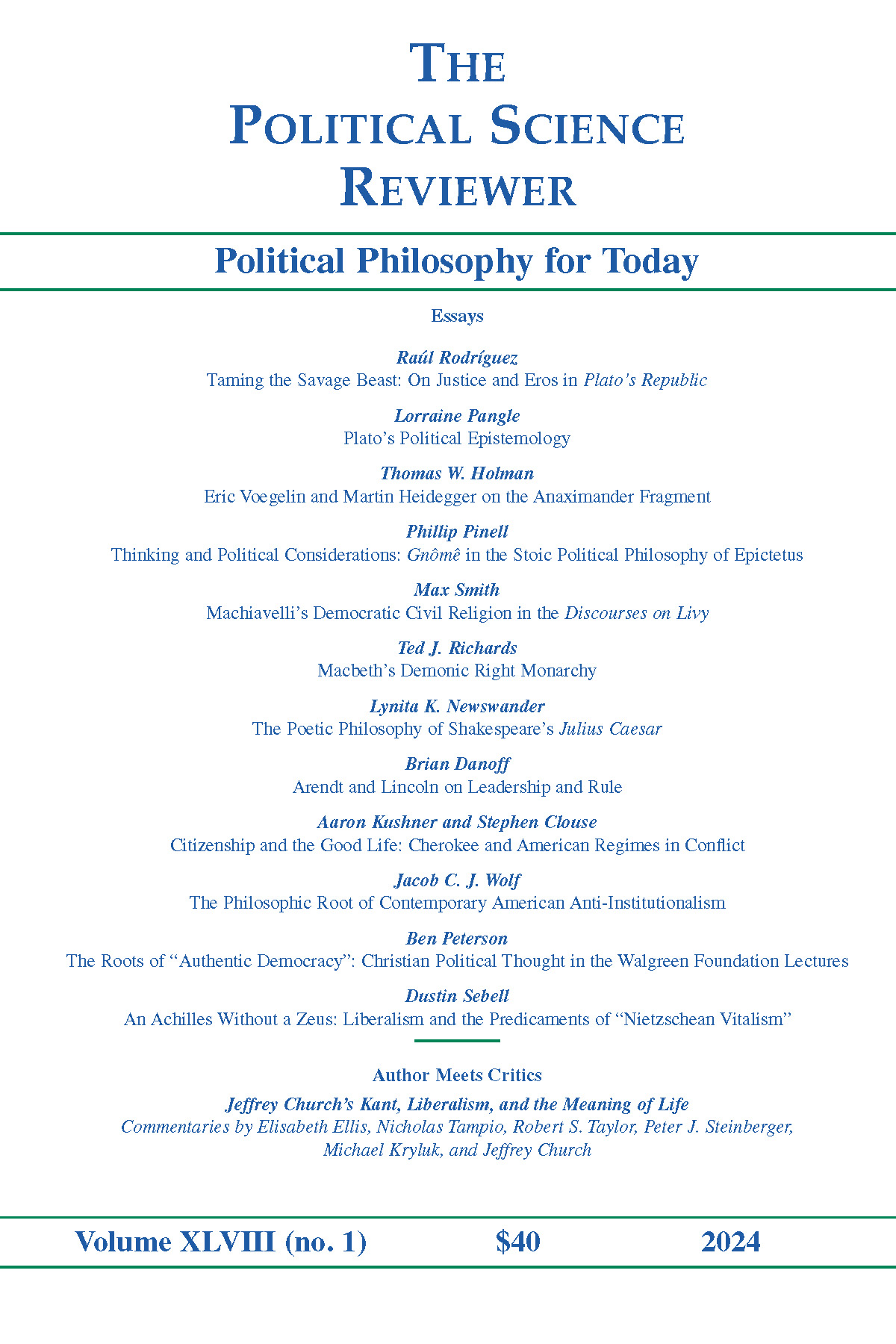
Author Meets Critics
The Scientific Revolution of Evolutionary Psychology: Current Status and Future Directions. A Commentary on Zagaria (2024)
- Published: 30 May 2024
Cite this article

- William Costello 1 , 2 &
- Andrew G. Thomas 2
Objectives: A bibliometric analysis by Zagaria (2024) claimed that research in Evolutionary Psychology (EP) lags behind research grounded in the Standard Social Science Model (SSSM) in prevalence and growth rate, questioning EP’s status as a scientific revolution. This commentary aims to re-evaluate Zagaria’s findings and conclusions. We raise two major concerns about his analysis. First, Zagaria’s EP syntax excluded key EP terms like fitness, psychological adaptation, and parental investment, while the SSSM syntax included homonyms (e.g., culture) not always relevant to SSSM (e.g., tissue culture in medicine). Second, the analysis included non-scientific journals from fields like gender studies, skewing results since EP is not intended to influence non-scientific fields like dance therapy or tourism studies. Focusing on high-impact psychology journals would better reflect EP’s influence. Methods: We revised the SSSM syntax to “cultural” and updated the EP syntax by adding “inclusive fitness,” “parental investment,” and “psychological adaptation.” Our analysis also used year-by-year data and 5- and 10-year rolling averages to assess trends more accurately. Results: Our analysis found that growth in EP and SSSM research is comparable over time, and the ratio of SSSM to EP papers was overstated by at least 23%. Conclusion: We highlight metrics that should be weighted more heavily than publication quantity, such as effect magnitude, universality, and replicability. By these metrics, EP is arguably outperforming the SSSM and embodies elements of the Kuhnian scientific revolution discussed by Zagaria (2024). This commentary offers a more optimistic vision for EP’s current status and future direction.
This is a preview of subscription content, log in via an institution to check access.
Access this article
Price includes VAT (Russian Federation)
Instant access to the full article PDF.
Rent this article via DeepDyve
Institutional subscriptions

Data Availability
No datasets were generated or analysed during the current study.
Note that in the year 2000 there was a large “jump” in recorded research papers of both kinds. While we are unsure why this occurred, it does support our case that greater temporal acuity is needed with this type of work.
Balachandran, N., & Glass, D. J. (2012). PsychTable.org: The taxonomy of human evolved psychological adaptations. Evolution: Education and Outreach , 5 , 312–320. https://doi.org/10.1007/s12052-012-0428-8 .
Article Google Scholar
Bleske-Rechek, A., & Donovan, B. A. (2015). Scientifically adrift: Limited change in scientific literacy, and no change in knowledge and acceptance of evolution, over three years of college. EvoS Journal: The Journal of the Evolutionary Studies Consortium , 7 , 21–43.
Google Scholar
Browne, K. R. (2006). Evolved sex differences and occupational segregation. Journal of Organizational Behavior , 27 (2), 143–162. https://doi.org/10.1002/job.349 .
Buss, D. M. (1988). The evolution of human intrasexual competition: Tactics of mate attraction. Journal of Personality and Social Psychology , 54 (4), 616.
Buss, D. M. (1989). Sex differences in human mate preferences: Evolutionary hypotheses tested in 37 cultures. Behavioral and Brain Sciences , 12 (1), 1–14.
Buss, D. M. (Ed.). (2005). The handbook of evolutionary psychology . John Wiley & Sons.
Buss, D. M. (2017). Sexual conflict in human mating. Current Directions in Psychological Science , 26 (4), 307–313. https://doi.org/10.1177/0963721417695559 .
Buss, D. M. (2020). Evolutionary psychology is a scientific revolution. Evolutionary Behavioral Sciences , 14 (4), 316. https://doi.org/10.1037/ebs0000210 .
Buss, D. M. (Ed.). (2016). The handbook of evolutionary psychology , 2nd edition. John Wiley &.
Buss, D. M., & Schmitt, D. P. (1993). Sexual strategies theory: An evolutionary perspective on human mating. Psychological Review , 100 , 204–232.
Buss, D. M., & Schmitt, D. P. (2011). Evolutionary psychology and feminism. Sex Roles , 64 , 768–787. https://doi.org/10.1007/s11199-011-9987-3 .
Buss, D. M., & Von Hippel, W. (2018). Psychological barriers to evolutionary psychology: Ideological bias and coalitional adaptations. Archives of Scientific Psychology , 6 (1), 148. https://doi.org/10.1037/arc0000049 .
Buss, D. M., Durkee, P. K., Shackelford, T. K., Bowdle, B. F., Schmitt, D. P., Brase, G. L., Choe, J. C., & Trofimova, I. (2020). Human status criteria: Sex differences and similarities across 14 nations. Journal of Personality and Social Psychology , 119 (5), 979–998. https://doi.org/10.1037/pspa0000206 .
C Stearns, S. (2012). Evolutionary medicine: Its scope, interest and potential. Proceedings of the Royal Society of London B , 279 (1746), 4305–4321. https://doi.org/10.1098/rspb.2012.1326 .
Campbell, A. (2006). Feminism and evolutionary psychology. In J. H. Barkow (Ed.), Missing the revolution: Darwinism for social scientists . (pp. 63–99). Oxford University Press.
Clark, C. J., & Tetlock, P. E. (2023). Adversarial collaboration: The next science reform . In C. L. Frisby, R. E., Redding, W. T., O’Donohue, & Lilienfeld, S. O. (Eds.). In Political bias in psychology: Nature, scope, and solutions . (pp. 905–927). Springer. https://doi.org/10.1007/978-3-031-29148-7_32 .
Curry, O. S., Mullins, D. A., & Whitehouse, H. (2019). Is it good to cooperate? Testing the theory of morality-as-cooperation in 60 societies. Current Anthropology , 60 (1), 47–69. https://doi.org/10.1086/701478 .
Darwin, C. (1859). The origin of species: By means of natural selection of the preservation of favoured races in the struggle for life . Murray.
Del Giudice, M. (2018). Evolutionary psychopathology: A unified approach . Oxford University Press.
Del Giudice, M. (2023). Ideological bias in the psychology of sex and gender . In C. L. Frisby, R. E., Redding, W. T., O’Donohue, & Lilienfeld, S. O. (Eds.). Political bias in psychology: Nature, scope, and solutions . (pp. 743–778). Springer.
Dobzhansky, T. (1973). Nothing in biology makes sense except in the light of evolution. The American Biology Teacher , 35 (3), 125–129. https://doi.org/10.2307/4444260 .
Fink, B., Bläsing, B., Ravignani, A., & Shackelford, T. K. (2021). Evolution and functions of human dance. Evolution and Human Behavior , 42 (4), 351–360. https://doi.org/10.1016/j.evolhumbehav.2021.01.003 .
Gangestad, S. W., Haselton, M. G., & Buss, D. M. (2006). Evolutionary foundations of cultural variation: Evoked culture and mate preferences. Psychological Inquiry , 17 (2), 75–95. https://doi.org/10.1207/s15327965pli1702_1 .
Garfield, Z., & [@zhgarfield] (2024, April 1). Human evolutionary social science is going mainstream after a sorted and contentious beginning (extended period of juvenile development?). [Graph]. X. url: https://x.com/zhgarfield/status/1774858724634452303 .
Gilbert, P., & Bailey, K. G. (Eds.). (2014). Genes on the couch: Explorations in evolutionary psychotherapy . Routledge.
Glass, D. J., Wilson, D. S., & Geher, G. (2012). Evolutionary training in relation to human affairs is sorely lacking in higher education. EvoS Journal: The Journal of the Evolutionary Studies Consortium , 4 (2), 16–22.
Hahnel-Peeters, R. K. (2021). Potential for collaboration: Differences between evolutionary anthropology and evolutionary psychology as scientific disciplines . PsyArXiv. https://doi.org/10.31234/osf.io/kp4rc
Hahnel-Peeters, R. K., Peeters, K. J., & Goetz, A. T. (2021). Why Boulder Springs has no boulders and no springs: Evolved landscape preferences and naming conventions. Psychology of Aesthetics Creativity and the Arts , 18 (2), 160–173. https://doi.org/10.1037/aca0000414 .
Haselton, M. G., & Buss, D. M. (2000). Error management theory: A new perspective on biases in cross-sex mind reading. Journal of Personality and Social Psychology , 78 (1), 81–91. https://doi.org/10.1037/0022-3514.78.1.81 .
Henrich, J., Heine, S. J., & Norenzayan, A. (2010). Most people are not WEIRD. Nature , 466 (7302), 29. https://doi.org/10.1038/466029a .
Ioannidis, J. P. A. (2023). Updated science-wide author databases of standardized citation indicators (Version 6) [Data set]. Elsevier Data Repository. https://doi.org/10.17632/btchxktzyw.6 .
Kuhn, T. S. (1996). The structure of scientific revolutions . The University of Chicago Press.
Liotti, G., Fassone, G., & Monticelli, F. (2017). L’evoluzione delle emozioni e dei sistemi motivazionali . Raffaello Cortina.
Lippa, R. A. (2009). Sex differences in sex drive, sociosexuality, and height across 53 nations: Testing evolutionary and social structural theories. Archives of Sexual Behavior , 38 , 631–651. https://doi.org/10.1007/s10508-007-9242-8 .
Lukaszewski, A. W. (2021). Evolutionary perspectives on the mechanistic underpinnings of personality. In J. F. Rauthmann (Ed.), The handbook of personality dynamics and processes (pp. 523–550). Academic.
Lukaszewski, A. W., Lewis, D. M., Durkee, P. K., Sell, A. N., Sznycer, D., & Buss, D. M. (2020). An adaptationist framework for personality science. European Journal of Personality , 34 (6), 1151–1174.
Marks, I. M., & Nesse, R. M. (1994). Fear and fitness: An evolutionary analysis of anxiety disorders. Ethology & Sociobiology , 15 , 247–261.
Muthukrishna, M., & Henrich, J. (2019). A problem in theory. Nature Human Behaviour , 3 (3), 221–229. https://doi.org/10.1038/s41562-018-0522-1 .
Nesse, R. M. (2000). Is depression an adaptation? Archives of General Psychiatry , 57 (1), 14–20. https://doi.org/10.1001/archpsyc.57.1.14 .
Nettle, D., & Scott-Phillips, T. (2023). Is a non-evolutionary psychology possible? In: du Crest, A., Valković, M., Ariew, A., Desmond, H., Huneman, P., & Reydon, T. A. C. (Eds.) Evolutionary thinking across disciplines . Synthese Library, vol 478 (pp. 21–42). Springer https://doi.org/10.1007/978-3-031-33358-3_2 .
Open Science Collaboration. (2015). Estimating the reproducibility of psychological science. Science , 349 (6251), aac4716. https://doi.org/10.1126/science.aac4716 .
Petersen, M. B. (2015). Evolutionary political psychology: On the origin and structure of heuristics and biases in politics. Political Psychology , 36 , 45–78. https://doi.org/10.1111/pops.12237 .
Pollet, T. V., & Saxton, T. K. (2019). How diverse are the samples used in the journals ‘Evolution & Human Behavior’ and ‘Evolutionary psychology’? Evolutionary Psychological Science , 5 , 357–368. https://doi.org/10.1007/s40806-019-00192-2 .
Santa Fe Boys Educational Foundation (2023). Sept 30 - Oct 1). Sex/gender differences. The Big Conservation . A conversation among international experts on the origins, mechanisms, and meaning of sex/gender differences. https://santafeboys.org/why-the-big-conversation/ .
Schaller, M., Norenzayan, A., Heine, S. J., Yamagishi, T., & Kameda, T. (Eds.). (2011). Evolution, culture, and the human mind . Psychology.
Schimmack, U. (2022). 2022 replicability rankings of psychology journals. Replicability Index. Retrieved May 20, 2024, from https://replicationindex.com/2022/01/26/rr21/ .
Schmitt, D. P. (2005). Sociosexuality from Argentina to Zimbabwe: A 48-nation study of sex, culture, and strategies of human mating. Behavioral and Brain Sciences , 28 (2), 247–275. https://doi.org/10.1017/S0140525X05000051 .
Schmitt, D. P. (2023). Extensions of sexual strategies theory across peoples, cultures, and ecologies. In D. M. Buss (Ed.), The Oxford handbook of human mating (pp. 66–118).
Simpson, J. A., & Belsky, J. (2016). Attachment theory within a modern evolutionary framework. In J. Cassidy, & P. R. Shaver (Eds.), The handbook of attachment: Theory, research, and clinical applications (2nd ed., pp. 131–157). Guilford Press.
Smaldino, P. E., & McElreath, R. (2016). The natural selection of bad science. Royal Society Open Science , 3 (9), 160384. https://doi.org/10.1098/rsos.160384 .
Thomas, A. G., Jonason, P. K., Blackburn, J. D., Kennair, L. E. O., Lowe, R., Malouff, J., & Li, N. P. (2019). Mate preference priorities in the East and West: A cross-cultural test of the mate preference priority model. Journal of Personality , 88 (3), 606–620. https://doi.org/10.1111/jopy.12514 .
Tooby, J., & Cosmides, L. (1992). The psychological foundations of culture. In The adapted mind: Evolutionary psychology and the generation of culture . J. H. Barkow, L. Cosmides, & Tooby, J. (Eds.). (pp. 19–136). Oxford University Press.
Trivers, R. L. (1972). Parental investment and sexual selection. In B. Campbell (Ed.), Sexual selection and the descent of man, 1871–1971 (pp. 136–179). Aldine.
Webster, G. D. (2007). Evolutionary theory’s increasing role in personality and social psychology. Evolutionary Psychology , 5 (1), 84–91. https://doi.org/10.1177/147470490700500108 .
Zagaria, A. (2024). Is evolutionary psychology a scientific revolution? A bibliometric analysis. Adaptive Human Behavior and Physiology , 10 , 31–49. https://doi.org/10.1007/s40750-024-00234-5 .
Download references
Acknowledgements
The authors wish to thank David M. Buss for his feedback on earlier drafts of this commentary.
The authors have no funding to report.
Author information
Authors and affiliations.
University of Texas at Austin, Austin, USA
William Costello
Swansea University, Swansea, UK
William Costello & Andrew G. Thomas
You can also search for this author in PubMed Google Scholar
Contributions
W.C. planned and wrote the main manuscriptA.G.T. conducted the analyses and prepared the figures A.G.T. reviewed the final manuscript.
Corresponding author
Correspondence to William Costello .
Ethics declarations
Ethical approval.
Not applicable.
Competing Interests
The authors declare no competing interests.
Additional information
Publisher’s note.
Springer Nature remains neutral with regard to jurisdictional claims in published maps and institutional affiliations.
The authors thank David M. Buss for his feedback on early drafts of this commentary.
Rights and permissions
Reprints and permissions
About this article
Costello, W., Thomas, A.G. The Scientific Revolution of Evolutionary Psychology: Current Status and Future Directions. A Commentary on Zagaria (2024). Adaptive Human Behavior and Physiology (2024). https://doi.org/10.1007/s40750-024-00240-7
Download citation
Received : 21 May 2024
Revised : 22 May 2024
Accepted : 23 May 2024
Published : 30 May 2024
DOI : https://doi.org/10.1007/s40750-024-00240-7
Share this article
Anyone you share the following link with will be able to read this content:
Sorry, a shareable link is not currently available for this article.
Provided by the Springer Nature SharedIt content-sharing initiative
- Evolutionary Psychology
- Scientific Revolution
- Standard Social Science Model
- Find a journal
- Publish with us
- Track your research

Site Content
Essays on art and science.
Eric R. Kandel
Columbia University Press
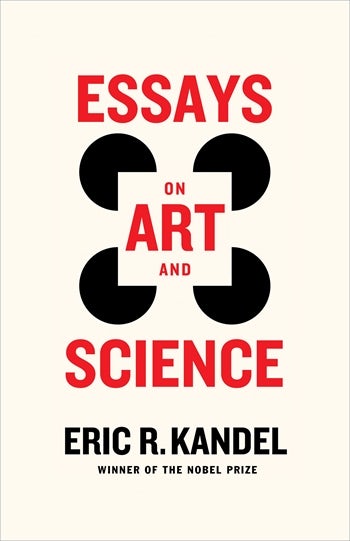
Pub Date: March 2024
ISBN: 9780231212564
Format: Hardcover
List Price: $26.95 £22.00
Shipping Options
Purchasing options are not available in this country.
ISBN: 9780231559454
Format: E-book
List Price: $25.99 £22.00
- EPUB via the Columbia UP App
- PDF via the Columbia UP App
Anything Eric R. Kandel says about neuroscience or the relationship between art and neuroscience is noteworthy. He is not only brilliant at explaining difficult and complex scientific ideas and data in simple language but also well-informed about—and sympathetic to—twentieth-century art, and avails himself of an impressive range of art-historical literature. Nancy Princenthal, author of Unspeakable Acts: Women, Art, and Sexual Violence in the 1970s, and Joseph E. LeDoux, Henry And Lucy Moses Professor of Science, New York University
A lively, erudite inquiry into the experience of art. Kirkus Reviews
Eric R. Kandel’s ‘Essays on Art and Science’ is a fascinating, thought-provoking read that beautifully articulates the complex interplay between our brain’s inner workings and our emotional responses to art. It’s a testament to Kandel’s expertise and ability to make science approachable and relevant to our everyday experiences with art. This book is a must-read for anyone interested in the profound ways in which art and science intersect to define our perception of the world. Mental Health Affairs
- Read an excerpt in Book Post
- Read an excerpt "The Creative Brain" from as published in The Transmitter
About the Author
- Neuroscience and Biopsychology
- Neuropsychology
- Fine Arts and Art History
The alarming rise of fake science
Fraudulent papers are flooding scientific journals
- Newsletter sign up Newsletter

Scientific fraud is becoming a larger issue. Thousands of fake scientific papers have flooded journals and have subsequently had to be retracted. Much of this is the work of paper mills, which submit fraudulent papers to journals for a fee. Scientific fraud and fake science reduce the legitimacy of peer-reviewed journals and can spread misinformation into the public sphere.
Real journals, fake science
Scientific journals are usually a source of reputable research and information, but recently thousands of fraudulent papers have been published in those journals and have needed to be retracted. "The proportion of papers published in any given year that go on to be retracted — has more than tripled in the past decade," said Nature . "In 2022, it exceeded 0.2%." Wiley, a more than 200-year-old publishing company, has retracted more than 11,300 compromised papers and closed four journals in the past two years. The company also announced that it will be closing 19 others. Several other publishing companies have been required to take similar actions. "Although this large-scale fraud represents a small percentage of submissions to journals, it threatens the legitimacy of the nearly $30 billion academic publishing industry and the credibility of science as a whole," said The Wall Street Journal .
The fake scientific papers are mostly the work of paper mills, "businesses or individuals that, for a price, will list a scientist as an author of a wholly or partially fabricated paper," said the Journal. The mills submit the papers and usually avoid "the most prestigious journals in favor of publications such as one-off special editions that might not undergo as thorough a review and where they have a better chance of getting bogus work published." Many researchers and scientists feel pressured to publish in peer-reviewed scientific journals in order to boost their careers or earn promotions. "Paper-mill products are a problem even if no one reads them because they get aggregated with others into review articles and laundered into the mainstream literature," David Bimler, a research-integrity sleuth who uses the pseudonym Smut Clyde, said to Nature. Paper mills have been found in several countries, including Russia, Iran, Latvia, China and India.
Subscribe to The Week
Escape your echo chamber. Get the facts behind the news, plus analysis from multiple perspectives.

Sign up for The Week's Free Newsletters
From our morning news briefing to a weekly Good News Newsletter, get the best of The Week delivered directly to your inbox.
Loss of integrity
Fraudulent scientific papers can have large implications. "The products of paper mills often look like regular articles but are based on templates in which names of genes or diseases are slotted in at random among fictitious tables and figures," said The Guardian . "Worryingly, these articles can then get incorporated into large databases used by those working on drug discovery." One of the most notable examples was the drug ivermectin being deemed a suitable cure for Covid-19 despite the studies largely containing evidence of fraud.
"The situation has become appalling," Oxford University professor Dorothy Bishop said to The Guardian. "The level of publishing of fraudulent papers is creating serious problems for science. In many fields, it is becoming difficult to build up a cumulative approach to a subject because we lack a solid foundation of trustworthy findings." Many blame the journals themselves for not thoroughly vetting the papers published. "Editors are not fulfilling their roles properly, and peer reviewers are not doing their jobs. And some are being paid large sums of money," said Aberdeen University professor Alison Avenell.
Some journals have created more rigorous standards for publication and have also increased surveillance to spot fraudulent papers. The good news is that many fake science papers have telltale signs, like unusual wording to avoid plagiarism and references listed that are irrelevant to the paper's topic. However, the advancement of AI could throw a wrench in the progress. "Generative AI has just handed [paper mills] a winning lottery ticket," Kim Eggleton, head of peer review and research integrity at IOP Publishing, said to the Journal. "They can do it really cheap, at scale, and the detection methods are not where we need them to be. I can only see that challenge increasing."
Sign up for Today's Best Articles in your inbox
A free daily email with the biggest news stories of the day – and the best features from TheWeek.com
Devika Rao has worked as a staff writer at The Week since 2022, covering science, the environment, climate and business. She previously worked as a policy associate for a nonprofit organization advocating for environmental action from a business perspective.

In the spotlight Some creatures may benefit from the new conditions
By Devika Rao, The Week US Published 29 May 24

The Explainer This economic indicator reflects how consumers feel about their finances and predicts whether they plan to spend money
By Becca Stanek, The Week US Published 29 May 24

The Week's daily crossword
By The Week Staff Published 29 May 24
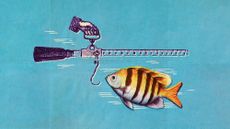
Under the Radar Smaller fish in a very, very big pond
By Devika Rao, The Week US Published 24 May 24

Under The Radar Once dismissed as mythology, the 'giant colossi' are now taken very seriously
By Chas Newkey-Burden, The Week UK Published 23 May 24

Under The Radar The 'eerie sinkhole' is rapidly expanding and climate change is the reason why
By Chas Newkey-Burden, The Week UK Published 9 May 24
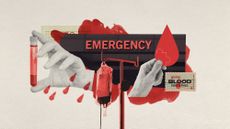
Under the Radar Scientists identify 'cocktail' of enzymes that destroy harmful antigens
By Rebecca Messina, The Week UK Published 3 May 24

The Explainer New analysis of its violent journey confirms scientific theories on the origin of our planet's H2O
By Sorcha Bradley, The Week UK Published 17 April 24

Speed Read While they can't see the event, they can hear it with a device that translates the sky's brightness into music
By Peter Weber, The Week US Published 1 April 24

Speed Read Ice loss caused by climate change is slowing the Earth's rotation
By Peter Weber, The Week US Published 28 March 24

under the radar Solar geoengineering is feeling the burn
By Devika Rao, The Week US Published 27 March 24
- Contact Future's experts
- Terms and Conditions
- Privacy Policy
- Cookie Policy
- Advertise With Us
The Week is part of Future plc, an international media group and leading digital publisher. Visit our corporate site . © Future US, Inc. Full 7th Floor, 130 West 42nd Street, New York, NY 10036.
- USC Libraries
- Research Guides
Organizing Your Social Sciences Research Paper
- 6. The Methodology
- Purpose of Guide
- Design Flaws to Avoid
- Independent and Dependent Variables
- Glossary of Research Terms
- Reading Research Effectively
- Narrowing a Topic Idea
- Broadening a Topic Idea
- Extending the Timeliness of a Topic Idea
- Academic Writing Style
- Applying Critical Thinking
- Choosing a Title
- Making an Outline
- Paragraph Development
- Research Process Video Series
- Executive Summary
- The C.A.R.S. Model
- Background Information
- The Research Problem/Question
- Theoretical Framework
- Citation Tracking
- Content Alert Services
- Evaluating Sources
- Primary Sources
- Secondary Sources
- Tiertiary Sources
- Scholarly vs. Popular Publications
- Qualitative Methods
- Quantitative Methods
- Insiderness
- Using Non-Textual Elements
- Limitations of the Study
- Common Grammar Mistakes
- Writing Concisely
- Avoiding Plagiarism
- Footnotes or Endnotes?
- Further Readings
- Generative AI and Writing
- USC Libraries Tutorials and Other Guides
- Bibliography
The methods section describes actions taken to investigate a research problem and the rationale for the application of specific procedures or techniques used to identify, select, process, and analyze information applied to understanding the problem, thereby, allowing the reader to critically evaluate a study’s overall validity and reliability. The methodology section of a research paper answers two main questions: How was the data collected or generated? And, how was it analyzed? The writing should be direct and precise and always written in the past tense.
Kallet, Richard H. "How to Write the Methods Section of a Research Paper." Respiratory Care 49 (October 2004): 1229-1232.
Importance of a Good Methodology Section
You must explain how you obtained and analyzed your results for the following reasons:
- Readers need to know how the data was obtained because the method you chose affects the results and, by extension, how you interpreted their significance in the discussion section of your paper.
- Methodology is crucial for any branch of scholarship because an unreliable method produces unreliable results and, as a consequence, undermines the value of your analysis of the findings.
- In most cases, there are a variety of different methods you can choose to investigate a research problem. The methodology section of your paper should clearly articulate the reasons why you have chosen a particular procedure or technique.
- The reader wants to know that the data was collected or generated in a way that is consistent with accepted practice in the field of study. For example, if you are using a multiple choice questionnaire, readers need to know that it offered your respondents a reasonable range of answers to choose from.
- The method must be appropriate to fulfilling the overall aims of the study. For example, you need to ensure that you have a large enough sample size to be able to generalize and make recommendations based upon the findings.
- The methodology should discuss the problems that were anticipated and the steps you took to prevent them from occurring. For any problems that do arise, you must describe the ways in which they were minimized or why these problems do not impact in any meaningful way your interpretation of the findings.
- In the social and behavioral sciences, it is important to always provide sufficient information to allow other researchers to adopt or replicate your methodology. This information is particularly important when a new method has been developed or an innovative use of an existing method is utilized.
Bem, Daryl J. Writing the Empirical Journal Article. Psychology Writing Center. University of Washington; Denscombe, Martyn. The Good Research Guide: For Small-Scale Social Research Projects . 5th edition. Buckingham, UK: Open University Press, 2014; Lunenburg, Frederick C. Writing a Successful Thesis or Dissertation: Tips and Strategies for Students in the Social and Behavioral Sciences . Thousand Oaks, CA: Corwin Press, 2008.
Structure and Writing Style
I. Groups of Research Methods
There are two main groups of research methods in the social sciences:
- The e mpirical-analytical group approaches the study of social sciences in a similar manner that researchers study the natural sciences . This type of research focuses on objective knowledge, research questions that can be answered yes or no, and operational definitions of variables to be measured. The empirical-analytical group employs deductive reasoning that uses existing theory as a foundation for formulating hypotheses that need to be tested. This approach is focused on explanation.
- The i nterpretative group of methods is focused on understanding phenomenon in a comprehensive, holistic way . Interpretive methods focus on analytically disclosing the meaning-making practices of human subjects [the why, how, or by what means people do what they do], while showing how those practices arrange so that it can be used to generate observable outcomes. Interpretive methods allow you to recognize your connection to the phenomena under investigation. However, the interpretative group requires careful examination of variables because it focuses more on subjective knowledge.
II. Content
The introduction to your methodology section should begin by restating the research problem and underlying assumptions underpinning your study. This is followed by situating the methods you used to gather, analyze, and process information within the overall “tradition” of your field of study and within the particular research design you have chosen to study the problem. If the method you choose lies outside of the tradition of your field [i.e., your review of the literature demonstrates that the method is not commonly used], provide a justification for how your choice of methods specifically addresses the research problem in ways that have not been utilized in prior studies.
The remainder of your methodology section should describe the following:
- Decisions made in selecting the data you have analyzed or, in the case of qualitative research, the subjects and research setting you have examined,
- Tools and methods used to identify and collect information, and how you identified relevant variables,
- The ways in which you processed the data and the procedures you used to analyze that data, and
- The specific research tools or strategies that you utilized to study the underlying hypothesis and research questions.
In addition, an effectively written methodology section should:
- Introduce the overall methodological approach for investigating your research problem . Is your study qualitative or quantitative or a combination of both (mixed method)? Are you going to take a special approach, such as action research, or a more neutral stance?
- Indicate how the approach fits the overall research design . Your methods for gathering data should have a clear connection to your research problem. In other words, make sure that your methods will actually address the problem. One of the most common deficiencies found in research papers is that the proposed methodology is not suitable to achieving the stated objective of your paper.
- Describe the specific methods of data collection you are going to use , such as, surveys, interviews, questionnaires, observation, archival research. If you are analyzing existing data, such as a data set or archival documents, describe how it was originally created or gathered and by whom. Also be sure to explain how older data is still relevant to investigating the current research problem.
- Explain how you intend to analyze your results . Will you use statistical analysis? Will you use specific theoretical perspectives to help you analyze a text or explain observed behaviors? Describe how you plan to obtain an accurate assessment of relationships, patterns, trends, distributions, and possible contradictions found in the data.
- Provide background and a rationale for methodologies that are unfamiliar for your readers . Very often in the social sciences, research problems and the methods for investigating them require more explanation/rationale than widely accepted rules governing the natural and physical sciences. Be clear and concise in your explanation.
- Provide a justification for subject selection and sampling procedure . For instance, if you propose to conduct interviews, how do you intend to select the sample population? If you are analyzing texts, which texts have you chosen, and why? If you are using statistics, why is this set of data being used? If other data sources exist, explain why the data you chose is most appropriate to addressing the research problem.
- Provide a justification for case study selection . A common method of analyzing research problems in the social sciences is to analyze specific cases. These can be a person, place, event, phenomenon, or other type of subject of analysis that are either examined as a singular topic of in-depth investigation or multiple topics of investigation studied for the purpose of comparing or contrasting findings. In either method, you should explain why a case or cases were chosen and how they specifically relate to the research problem.
- Describe potential limitations . Are there any practical limitations that could affect your data collection? How will you attempt to control for potential confounding variables and errors? If your methodology may lead to problems you can anticipate, state this openly and show why pursuing this methodology outweighs the risk of these problems cropping up.
NOTE: Once you have written all of the elements of the methods section, subsequent revisions should focus on how to present those elements as clearly and as logically as possibly. The description of how you prepared to study the research problem, how you gathered the data, and the protocol for analyzing the data should be organized chronologically. For clarity, when a large amount of detail must be presented, information should be presented in sub-sections according to topic. If necessary, consider using appendices for raw data.
ANOTHER NOTE: If you are conducting a qualitative analysis of a research problem , the methodology section generally requires a more elaborate description of the methods used as well as an explanation of the processes applied to gathering and analyzing of data than is generally required for studies using quantitative methods. Because you are the primary instrument for generating the data [e.g., through interviews or observations], the process for collecting that data has a significantly greater impact on producing the findings. Therefore, qualitative research requires a more detailed description of the methods used.
YET ANOTHER NOTE: If your study involves interviews, observations, or other qualitative techniques involving human subjects , you may be required to obtain approval from the university's Office for the Protection of Research Subjects before beginning your research. This is not a common procedure for most undergraduate level student research assignments. However, i f your professor states you need approval, you must include a statement in your methods section that you received official endorsement and adequate informed consent from the office and that there was a clear assessment and minimization of risks to participants and to the university. This statement informs the reader that your study was conducted in an ethical and responsible manner. In some cases, the approval notice is included as an appendix to your paper.
III. Problems to Avoid
Irrelevant Detail The methodology section of your paper should be thorough but concise. Do not provide any background information that does not directly help the reader understand why a particular method was chosen, how the data was gathered or obtained, and how the data was analyzed in relation to the research problem [note: analyzed, not interpreted! Save how you interpreted the findings for the discussion section]. With this in mind, the page length of your methods section will generally be less than any other section of your paper except the conclusion.
Unnecessary Explanation of Basic Procedures Remember that you are not writing a how-to guide about a particular method. You should make the assumption that readers possess a basic understanding of how to investigate the research problem on their own and, therefore, you do not have to go into great detail about specific methodological procedures. The focus should be on how you applied a method , not on the mechanics of doing a method. An exception to this rule is if you select an unconventional methodological approach; if this is the case, be sure to explain why this approach was chosen and how it enhances the overall process of discovery.
Problem Blindness It is almost a given that you will encounter problems when collecting or generating your data, or, gaps will exist in existing data or archival materials. Do not ignore these problems or pretend they did not occur. Often, documenting how you overcame obstacles can form an interesting part of the methodology. It demonstrates to the reader that you can provide a cogent rationale for the decisions you made to minimize the impact of any problems that arose.
Literature Review Just as the literature review section of your paper provides an overview of sources you have examined while researching a particular topic, the methodology section should cite any sources that informed your choice and application of a particular method [i.e., the choice of a survey should include any citations to the works you used to help construct the survey].
It’s More than Sources of Information! A description of a research study's method should not be confused with a description of the sources of information. Such a list of sources is useful in and of itself, especially if it is accompanied by an explanation about the selection and use of the sources. The description of the project's methodology complements a list of sources in that it sets forth the organization and interpretation of information emanating from those sources.
Azevedo, L.F. et al. "How to Write a Scientific Paper: Writing the Methods Section." Revista Portuguesa de Pneumologia 17 (2011): 232-238; Blair Lorrie. “Choosing a Methodology.” In Writing a Graduate Thesis or Dissertation , Teaching Writing Series. (Rotterdam: Sense Publishers 2016), pp. 49-72; Butin, Dan W. The Education Dissertation A Guide for Practitioner Scholars . Thousand Oaks, CA: Corwin, 2010; Carter, Susan. Structuring Your Research Thesis . New York: Palgrave Macmillan, 2012; Kallet, Richard H. “How to Write the Methods Section of a Research Paper.” Respiratory Care 49 (October 2004):1229-1232; Lunenburg, Frederick C. Writing a Successful Thesis or Dissertation: Tips and Strategies for Students in the Social and Behavioral Sciences . Thousand Oaks, CA: Corwin Press, 2008. Methods Section. The Writer’s Handbook. Writing Center. University of Wisconsin, Madison; Rudestam, Kjell Erik and Rae R. Newton. “The Method Chapter: Describing Your Research Plan.” In Surviving Your Dissertation: A Comprehensive Guide to Content and Process . (Thousand Oaks, Sage Publications, 2015), pp. 87-115; What is Interpretive Research. Institute of Public and International Affairs, University of Utah; Writing the Experimental Report: Methods, Results, and Discussion. The Writing Lab and The OWL. Purdue University; Methods and Materials. The Structure, Format, Content, and Style of a Journal-Style Scientific Paper. Department of Biology. Bates College.
Writing Tip
Statistical Designs and Tests? Do Not Fear Them!
Don't avoid using a quantitative approach to analyzing your research problem just because you fear the idea of applying statistical designs and tests. A qualitative approach, such as conducting interviews or content analysis of archival texts, can yield exciting new insights about a research problem, but it should not be undertaken simply because you have a disdain for running a simple regression. A well designed quantitative research study can often be accomplished in very clear and direct ways, whereas, a similar study of a qualitative nature usually requires considerable time to analyze large volumes of data and a tremendous burden to create new paths for analysis where previously no path associated with your research problem had existed.
To locate data and statistics, GO HERE .
Another Writing Tip
Knowing the Relationship Between Theories and Methods
There can be multiple meaning associated with the term "theories" and the term "methods" in social sciences research. A helpful way to delineate between them is to understand "theories" as representing different ways of characterizing the social world when you research it and "methods" as representing different ways of generating and analyzing data about that social world. Framed in this way, all empirical social sciences research involves theories and methods, whether they are stated explicitly or not. However, while theories and methods are often related, it is important that, as a researcher, you deliberately separate them in order to avoid your theories playing a disproportionate role in shaping what outcomes your chosen methods produce.
Introspectively engage in an ongoing dialectic between the application of theories and methods to help enable you to use the outcomes from your methods to interrogate and develop new theories, or ways of framing conceptually the research problem. This is how scholarship grows and branches out into new intellectual territory.
Reynolds, R. Larry. Ways of Knowing. Alternative Microeconomics . Part 1, Chapter 3. Boise State University; The Theory-Method Relationship. S-Cool Revision. United Kingdom.
Yet Another Writing Tip
Methods and the Methodology
Do not confuse the terms "methods" and "methodology." As Schneider notes, a method refers to the technical steps taken to do research . Descriptions of methods usually include defining and stating why you have chosen specific techniques to investigate a research problem, followed by an outline of the procedures you used to systematically select, gather, and process the data [remember to always save the interpretation of data for the discussion section of your paper].
The methodology refers to a discussion of the underlying reasoning why particular methods were used . This discussion includes describing the theoretical concepts that inform the choice of methods to be applied, placing the choice of methods within the more general nature of academic work, and reviewing its relevance to examining the research problem. The methodology section also includes a thorough review of the methods other scholars have used to study the topic.
Bryman, Alan. "Of Methods and Methodology." Qualitative Research in Organizations and Management: An International Journal 3 (2008): 159-168; Schneider, Florian. “What's in a Methodology: The Difference between Method, Methodology, and Theory…and How to Get the Balance Right?” PoliticsEastAsia.com. Chinese Department, University of Leiden, Netherlands.
- << Previous: Scholarly vs. Popular Publications
- Next: Qualitative Methods >>
- Last Updated: May 30, 2024 9:38 AM
- URL: https://libguides.usc.edu/writingguide
The Therapeutic Science and Benefits of Acupuncture
This essay about acupuncture explores its evolution from an ancient Chinese therapeutic practice to a vital component of modern holistic healthcare. It discusses acupuncture’s foundation in traditional Chinese medicine and the concept of Qi, the vital life force. The text also examines modern scientific findings that support acupuncture’s efficacy in treating various conditions, addressing skepticism, and highlighting its integration into mainstream medicine as a bridge between Eastern and Western healing traditions.
How it works
Acupuncture, an ancient therapeutic art deeply rooted in Chinese heritage, has evolved into a cornerstone of holistic well-being, seamlessly integrating into contemporary healthcare with its intricate healing techniques. Grounded in the core principles of traditional Chinese medicine (TCM), acupuncture goes beyond the simple insertion of fine needles; it engages intuitively with the body’s innate capacity for restoration and balance.
At the heart of acupuncture’s philosophy is the concept of Qi, the vital life force that flows through meridians crisscrossing the body.
These meridians act as channels of vitality, nourishing every cell and organ, thereby promoting balance and resilience. When the flow of Qi is disrupted, it can lead to various ailments or discomforts. Acupuncture addresses these imbalances by strategically placing needles to recalibrate the Qi flow, reestablishing equilibrium and activating the body’s natural healing processes.
Modern scientific exploration of acupuncture reveals a complex interplay of neurobiological responses and systemic adaptations. Neuroimaging studies have shown activation in brain regions associated with pain modulation, emotional regulation, and autonomic function, illustrating the intricate interaction between needles and neurons. Acupuncture embodies the holistic ethos of integrative medicine, acknowledging the interconnectedness of mind, body, and spirit in achieving well-being.
Acupuncture’s scope extends beyond pain relief, addressing a wide range of conditions and imbalances. From chronic pain to mental health disorders, acupuncture offers a healing sanctuary where ancient wisdom and modern science converge. It alleviates anxiety, lifts depression, and reduces stress through its therapeutic touch.
Acupuncture’s legacy transcends cultural boundaries, uniting diverse traditions in the pursuit of health and harmony. As it becomes more integrated into mainstream healthcare, it ushers in a new era of healing that bridges ancient wisdom with modern science. However, skepticism remains, fueled by misunderstandings and a lack of large-scale randomized controlled trials (RCTs) and clear placebo controls. This skepticism challenges the reductionist approach, inviting a deeper appreciation of the complexity and variability of human experience. Acupuncture transcends empirical scrutiny, resonating with the body’s intuitive wisdom that surpasses mere statistical significance—wisdom attuned to the rhythms of nature and the flow of Qi.
In the dynamic exchange of cultures, acupuncture serves as a bridge linking epochs and continents, merging diverse traditions in a collective quest for healing and wholeness. As Eastern wisdom meets Western science, acupuncture invites us to move beyond dogma and embrace the limitless potential of healing in all its forms. Within the delicate interaction of needle and meridian lies a promise of restoration, resilience, and an eternal dance of healing that transcends the boundaries of time and space.
Cite this page
The Therapeutic Science and Benefits of Acupuncture. (2024, May 21). Retrieved from https://papersowl.com/examples/the-therapeutic-science-and-benefits-of-acupuncture/
"The Therapeutic Science and Benefits of Acupuncture." PapersOwl.com , 21 May 2024, https://papersowl.com/examples/the-therapeutic-science-and-benefits-of-acupuncture/
PapersOwl.com. (2024). The Therapeutic Science and Benefits of Acupuncture . [Online]. Available at: https://papersowl.com/examples/the-therapeutic-science-and-benefits-of-acupuncture/ [Accessed: 31 May. 2024]
"The Therapeutic Science and Benefits of Acupuncture." PapersOwl.com, May 21, 2024. Accessed May 31, 2024. https://papersowl.com/examples/the-therapeutic-science-and-benefits-of-acupuncture/
"The Therapeutic Science and Benefits of Acupuncture," PapersOwl.com , 21-May-2024. [Online]. Available: https://papersowl.com/examples/the-therapeutic-science-and-benefits-of-acupuncture/. [Accessed: 31-May-2024]
PapersOwl.com. (2024). The Therapeutic Science and Benefits of Acupuncture . [Online]. Available at: https://papersowl.com/examples/the-therapeutic-science-and-benefits-of-acupuncture/ [Accessed: 31-May-2024]
Don't let plagiarism ruin your grade
Hire a writer to get a unique paper crafted to your needs.

Our writers will help you fix any mistakes and get an A+!
Please check your inbox.
You can order an original essay written according to your instructions.
Trusted by over 1 million students worldwide
1. Tell Us Your Requirements
2. Pick your perfect writer
3. Get Your Paper and Pay
Hi! I'm Amy, your personal assistant!
Don't know where to start? Give me your paper requirements and I connect you to an academic expert.
short deadlines
100% Plagiarism-Free
Certified writers

IMAGES
VIDEO
COMMENTS
The conclusion is intended to help the reader understand why your research should matter to them after they have finished reading the paper. A conclusion is not merely a summary of the main topics covered or a re-statement of your research problem, but a synthesis of key points derived from the findings of your study and, if applicable, where you recommend new areas for future research.
However, most college-level research papers require careful attention to the following stylistic elements: ... there are other aspects of academic writing in the social sciences that you should be aware of. These problems include: ... Arguments, evidence, and their significance have been presented in the conclusion. Limitations of your research ...
This essay on essays is drawn from the book Good Essay Writing: A Social Sciences Guide, Fourth Edition, by Peter Redman, a senior lecturer in sociology at The Open University, and academic consultant Wendy Maples. Good Essay Writing is published by SAGE, the parent of Social Science Space.
Social science essays also need to demonstrate an effective use of social scientific skills. Perhaps the most obvious of these skills is the ability to deploy theory and evidence in an appropriate manner (as you saw in the previous section, this is what distinguishes social scientific essay writing).
Conclusion - Draw together your key arguments. Demonstrate how you have sufficiently answered the essay question. Avoid introducing new ... School of Social Science Essay Guide 9 social sciences, the best we can normally do is to present a persuasive case, based on evidence and reason for a particular explanation.
The following is a condensed overview of the most important features of social science essay writing. Its aim is to cut through the noise, and focus on the most essential (and important) elements of essay writing. ... It is usually a good idea to have a differentiated conclusion, in which you e.g. agree with a statement to a certain extent or ...
Give the reasons, interpret and to make plain. Illustrate: Use a figure, diagram, example or even a description to explain or clarify, thus. giving a visual impression. Justify: Support a conclusion or hypothesis by making reference to available. evidence/resources and providing a reasoned argument.
A Social Studies thesis needs to be between 20,000 and 30,000 words long, which roughly works out to about 80-120 pages in length. While this may sound intimidating, the reality is that most students end up somewhere over the wordcount and end up hav- ing to edit their content back down.
The purpose of a paper in the social sciences designed around a case study is to thoroughly investigate a subject of analysis in order to reveal a new understanding about the research problem and, in so doing, contributing new knowledge to what is already known from previous studies. In applied social sciences disciplines [e.g., education, social work, public administration, etc.], case ...
For a social science research paper, APA format is typically expected. APA format was developed for the social sciences, so it is followed fairly strictly in these types of papers in both formatting the paper and citing sources. When in doubt, follow APA guidelines. Use peer-reviewed sources for research.
Writing good essays is one of the most challenging aspects of studying in the social sciences. This simple guide provides you with proven approaches and techniques to help turn you into a well-oiled, essay-writing machine. Good Essay Writing demonstrates how to think critically and formulate your argument as well as offering water-tight ...
The purpose of a conclusion is to make sure your imaginary reader leaves the essay with a sense of clarity, and in a way, a sense of purpose, an understanding of what this all means in the bigger scheme of things. For the first point, you reiterate the main points you made in the essay. This makes sure your reader is on the same page with you ...
This concise guide to writing undergraduate social science essays was first published in 1998. The book has been redesigned for the 3rd edi tion, the text has been updated and new material included on how ... ten per cent of the essay and to use the conclusion to give a condensed version of their core argument, which includes an overview of the
VI. Conclusion. The conclusion reiterates the importance or significance of your proposal and provides a brief summary of the entire study. This section should be only one or two paragraphs long, emphasizing why the research problem is worth investigating, why your research study is unique, and how it should advance existing knowledge.
particular, essay writing in the social sciences. To start with, we look at the structure of social science essays. 2.1 The structure of a basic social science essay There are different types of social science essay, and essays of different lengths require slightly different approaches (these will be addressed later). However, all social ...
SAGE, Feb 22, 2017 - Social Science - 200 pages. Writing good essays is one of the most challenging aspects of studying in the social sciences. This simple guide provides you with proven approaches and techniques to help turn you into a well-oiled, essay writing machine. Good Essay Writing demonstrates how to think critically and formulate your ...
Make Them Care. While your thesis might be important to you, your conclusion is your final opportunity to show your readers why the topic should be important to them. Structure your closing remarks in a way that highlights the importance of your topic, and why people should continue to discuss the subject. For example, if your paper discusses ...
The conclusion also provides a place for you to persuasively and succinctly restate your research problem, given that the reader has now been presented with all the information about the topic. Depending on the discipline you are writing in, the concluding paragraph may contain your reflections on the evidence presented, or on the essay's ...
Conclusion. Social science, far from being an abstract academic pursuit, is an integral part of our daily lives. It informs our understanding of human behavior, shapes public policies, enhances personal finance decisions, addresses societal issues, and fosters global citizenship. Moreover, it nurtures critical thinking, informs ethical values ...
64 essay samples found. Social science is a branch of learning that examines society and the relationships among individuals within society. It encompasses various disciplines like sociology, psychology, political science, economics, anthropology, and more. Essays on social science might explore methodologies, theories, or the practical ...
Nowadays, social science study plays an important role in the development of a country that has knowledgeable society and healthy society. Social science refers to any scientific study about human interaction and action that focus on the behavior and thought which it is known as social. Research in social science is widely where it will bring ...
Writing Resources. Essays in the Humanities and Social Sciences. These essays are usually some type of analysis or interpretation which require that you develop a thesis and then prove that thesis in the body of the paper. These are the types of papers (in contrast to lab reports or marketing proposals) closest to the style you have written in ...
In Good Essay Writing: A Social Sciences Guide. Peter Redman. 4th edition. (London: Sage, 2011), pp. 63-70; Resources for Writers: Introduction Strategies. Program in Writing and Humanistic Studies. ... The final paragraph or sentences of your introduction should forecast your main arguments and conclusions and provide a brief description of ...
Political Science Reviewer c/o Richard Avramenko, Editor-in-Chief 110 North Hall 1050 Bascom Mall University of Wisconsin-Madison Madison, WI 53706. Email: [email protected]. Published by the Center for the Study of Liberal Democracy at the University of Wisconsin-Madison, ISSN 0091-3715 (print), ISSN 2575-9248 (online)
Objectives: A bibliometric analysis by Zagaria (2024) claimed that research in Evolutionary Psychology (EP) lags behind research grounded in the Standard Social Science Model (SSSM) in prevalence and growth rate, questioning EP's status as a scientific revolution. This commentary aims to re-evaluate Zagaria's findings and conclusions. We raise two major concerns about his analysis. First ...
The essays on art and science in this book vary widely in subject matter, including the angst-ridden portraits of Soutine, conflicting views of women's sexuality, Cubism's challenge to our innate visual processes, and why we react differently to abstract versus figurative art. But each essay focuses on the interaction of art and science.
published 29 May 2024. Scientific fraud is becoming a larger issue. Thousands of fake scientific papers have flooded journals and have subsequently had to be retracted. Much of this is the work of ...
PAPERS. 490. Feedback. Feedback to SSRN. Feedback (required) Email (required) Submit If you need immediate assistance, call 877-SSRNHelp (877 777 6435) in the United States, or +1 212 448 2500 outside of the United States, 8:30AM to 6:00PM U.S. Eastern, Monday - Friday. Submit a Paper.
Bem, Daryl J. Writing the Empirical Journal Article. Psychology Writing Center. University of Washington; Denscombe, Martyn. The Good Research Guide: For Small-Scale Social Research Projects. 5th edition.Buckingham, UK: Open University Press, 2014; Lunenburg, Frederick C. Writing a Successful Thesis or Dissertation: Tips and Strategies for Students in the Social and Behavioral Sciences.
From chronic pain to mental health disorders, acupuncture offers a healing sanctuary where ancient wisdom and modern science converge. It alleviates anxiety, lifts depression, and reduces stress through its therapeutic touch. Acupuncture's legacy transcends cultural boundaries, uniting diverse traditions in the pursuit of health and harmony.